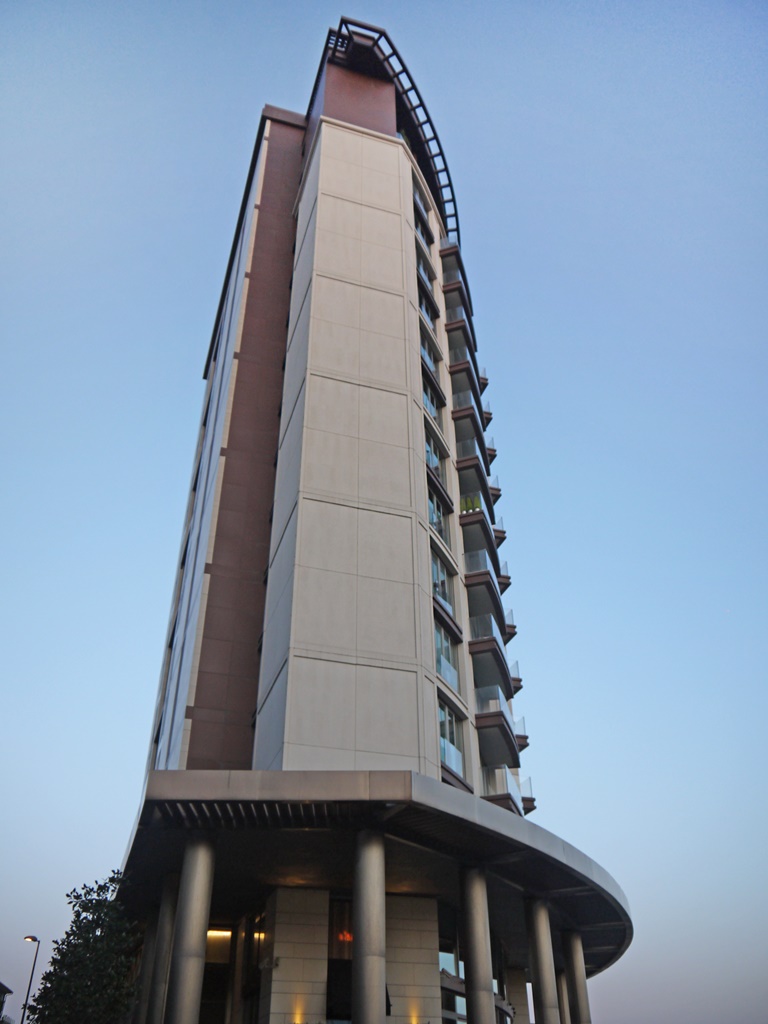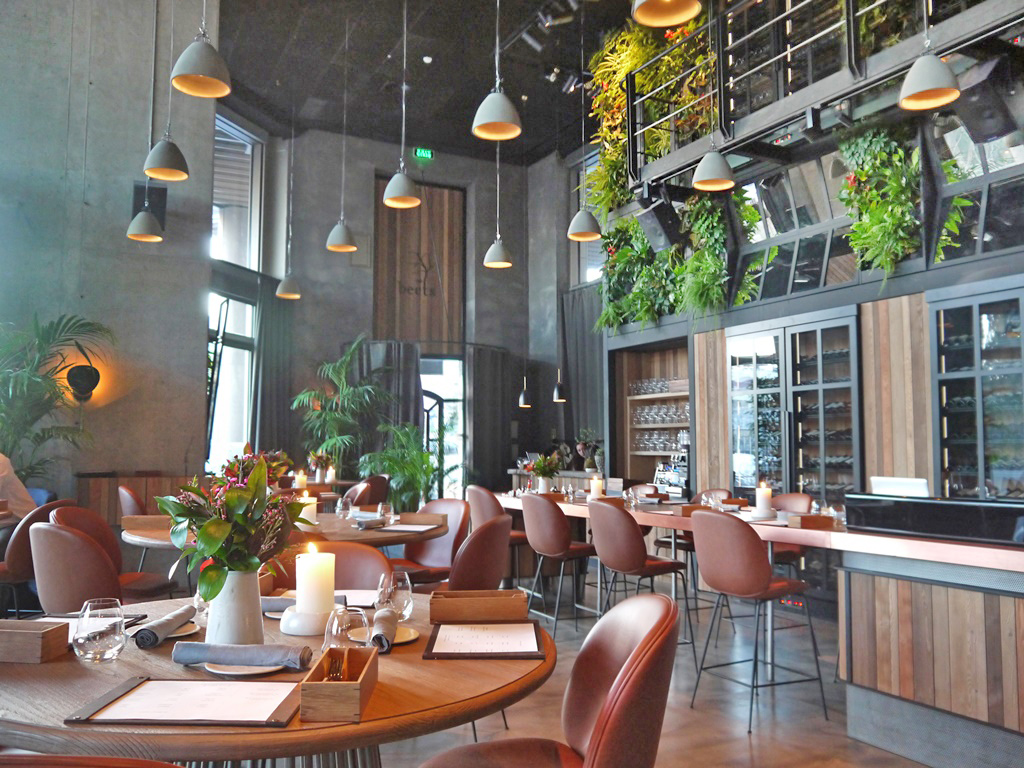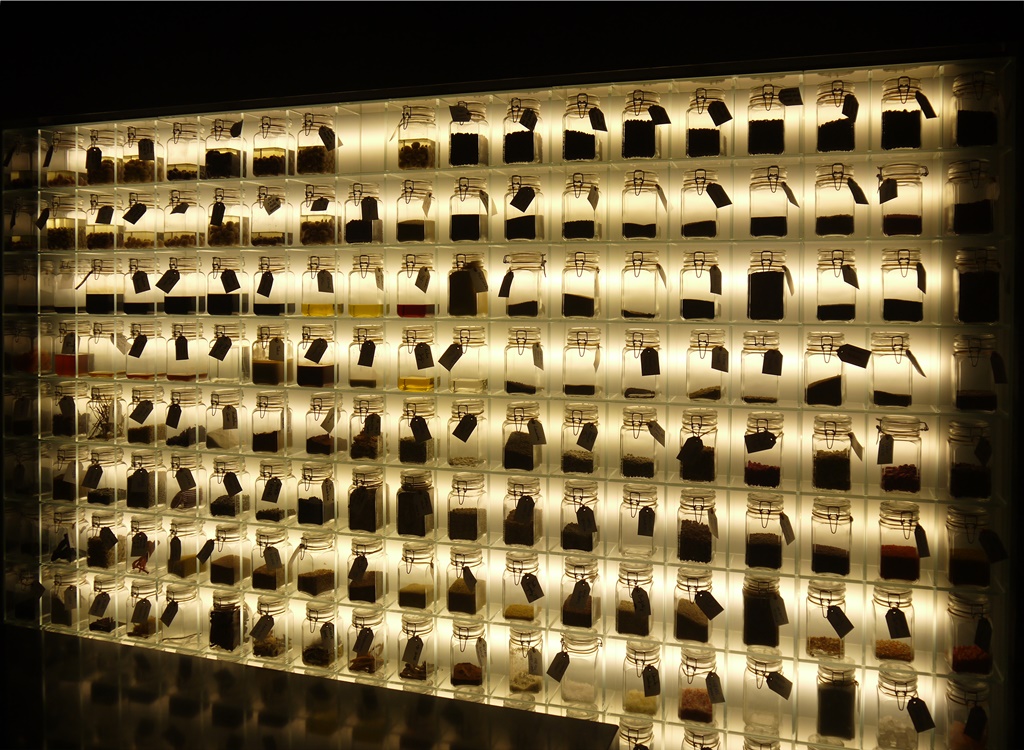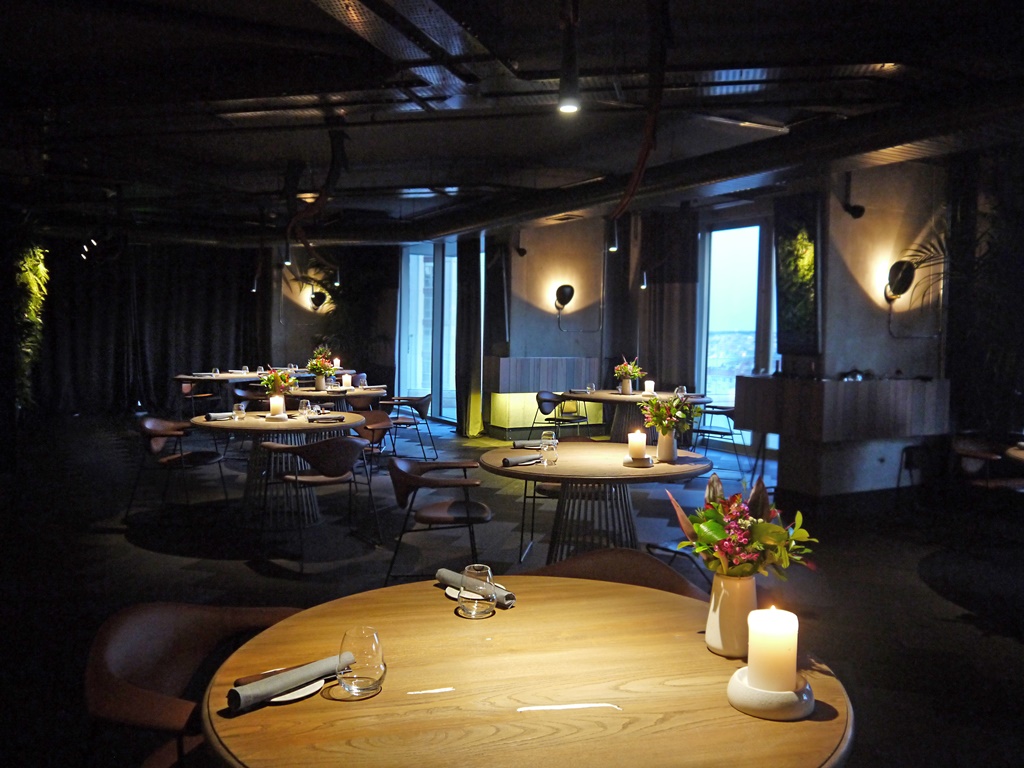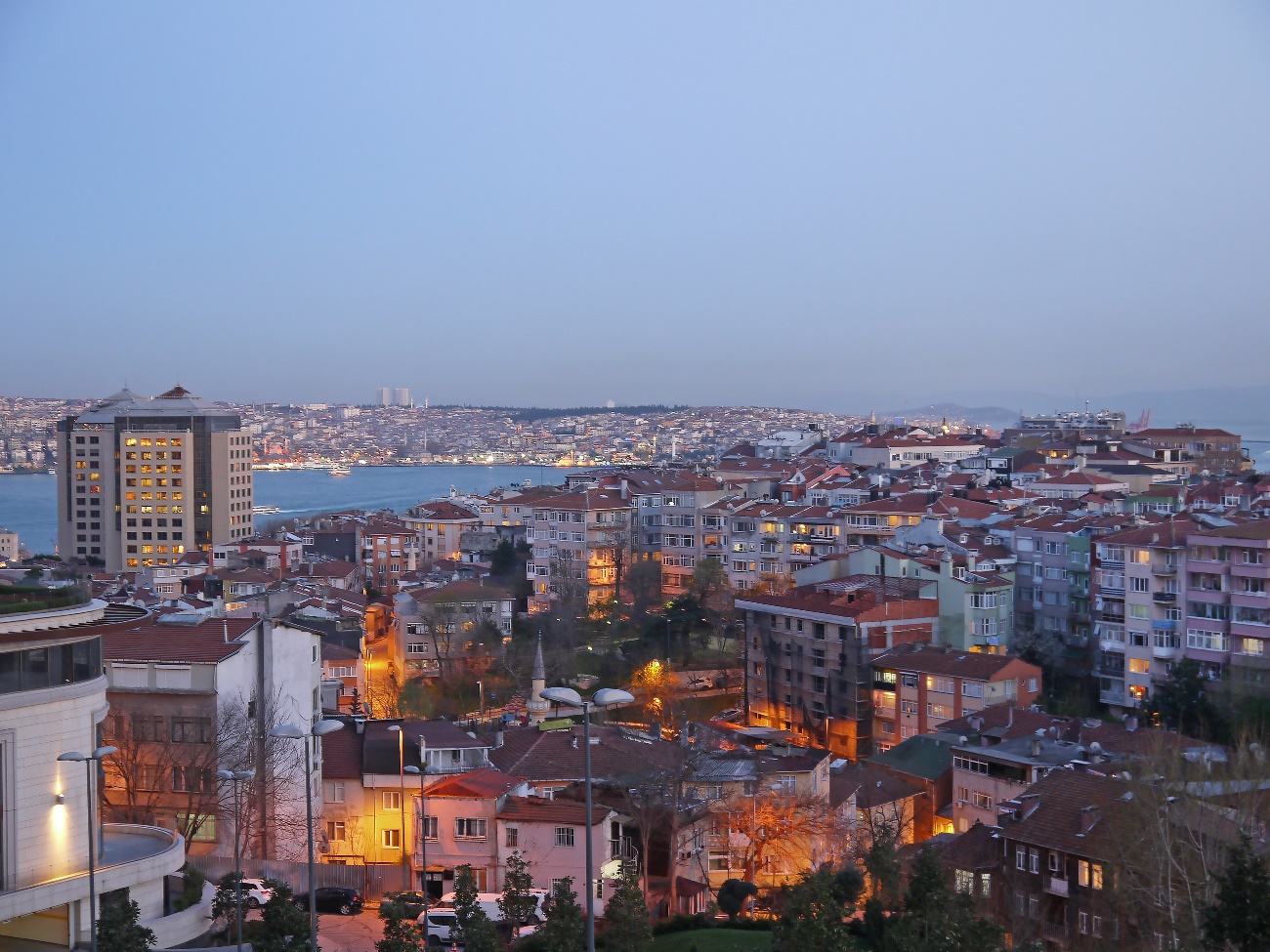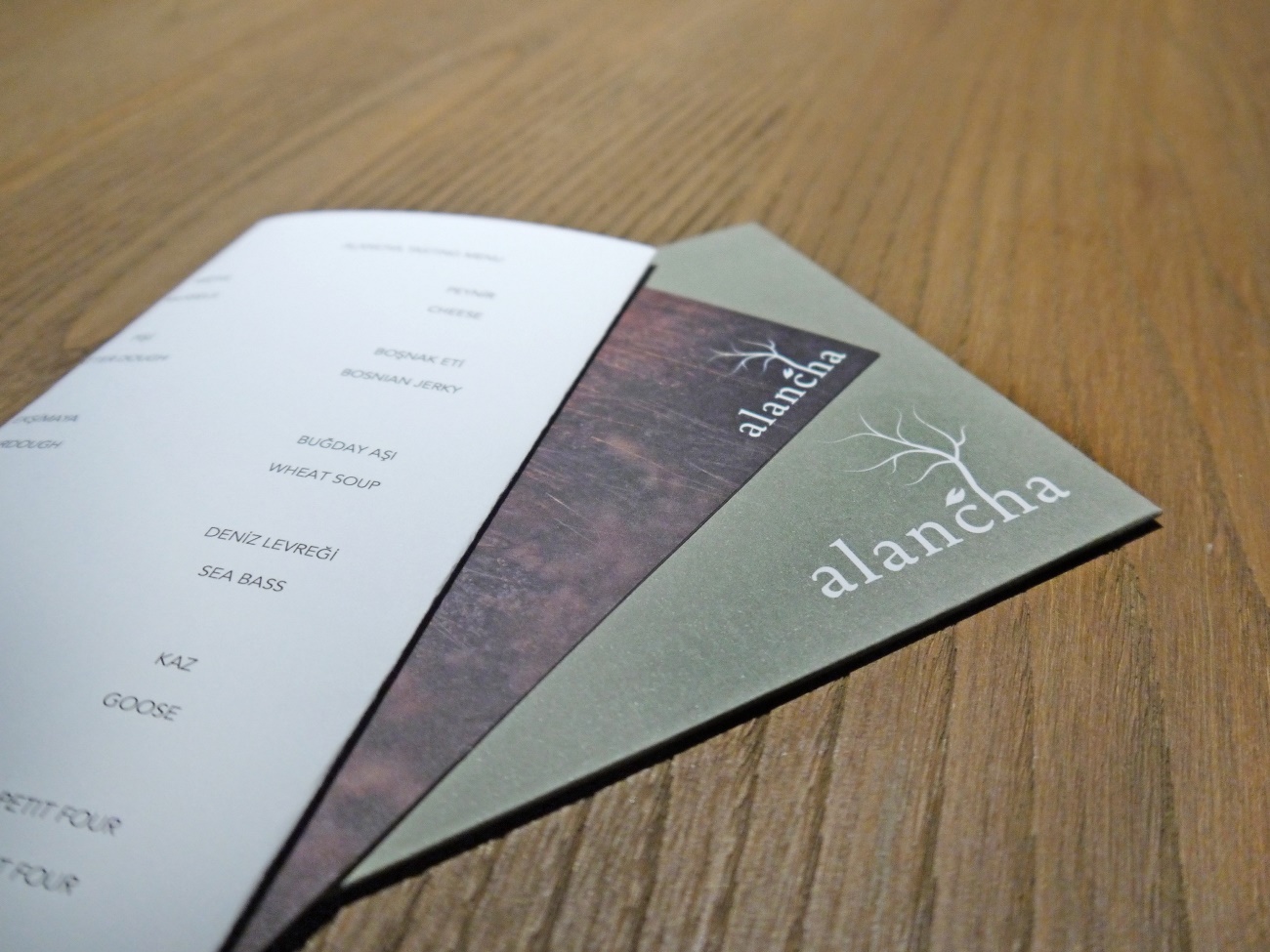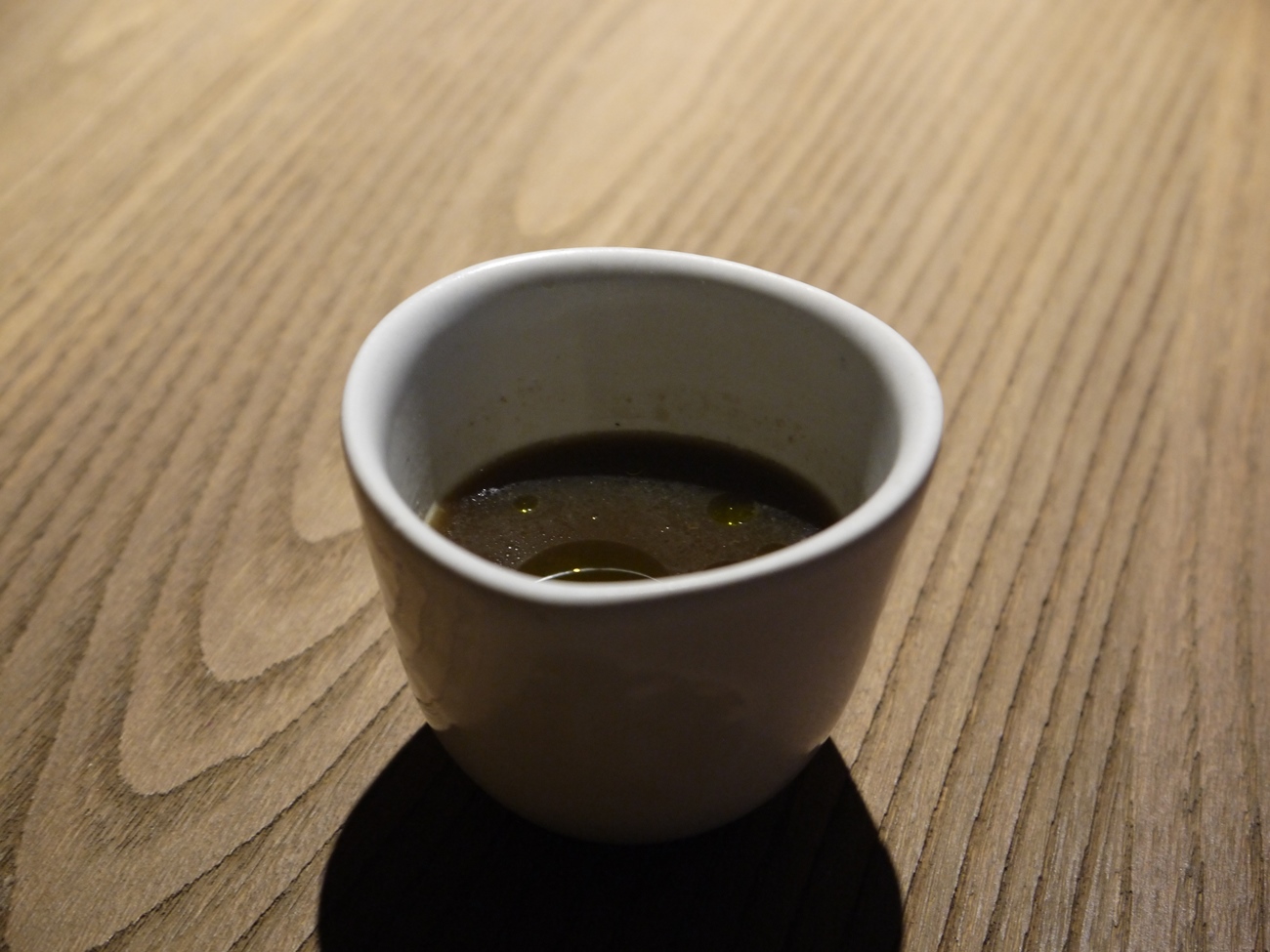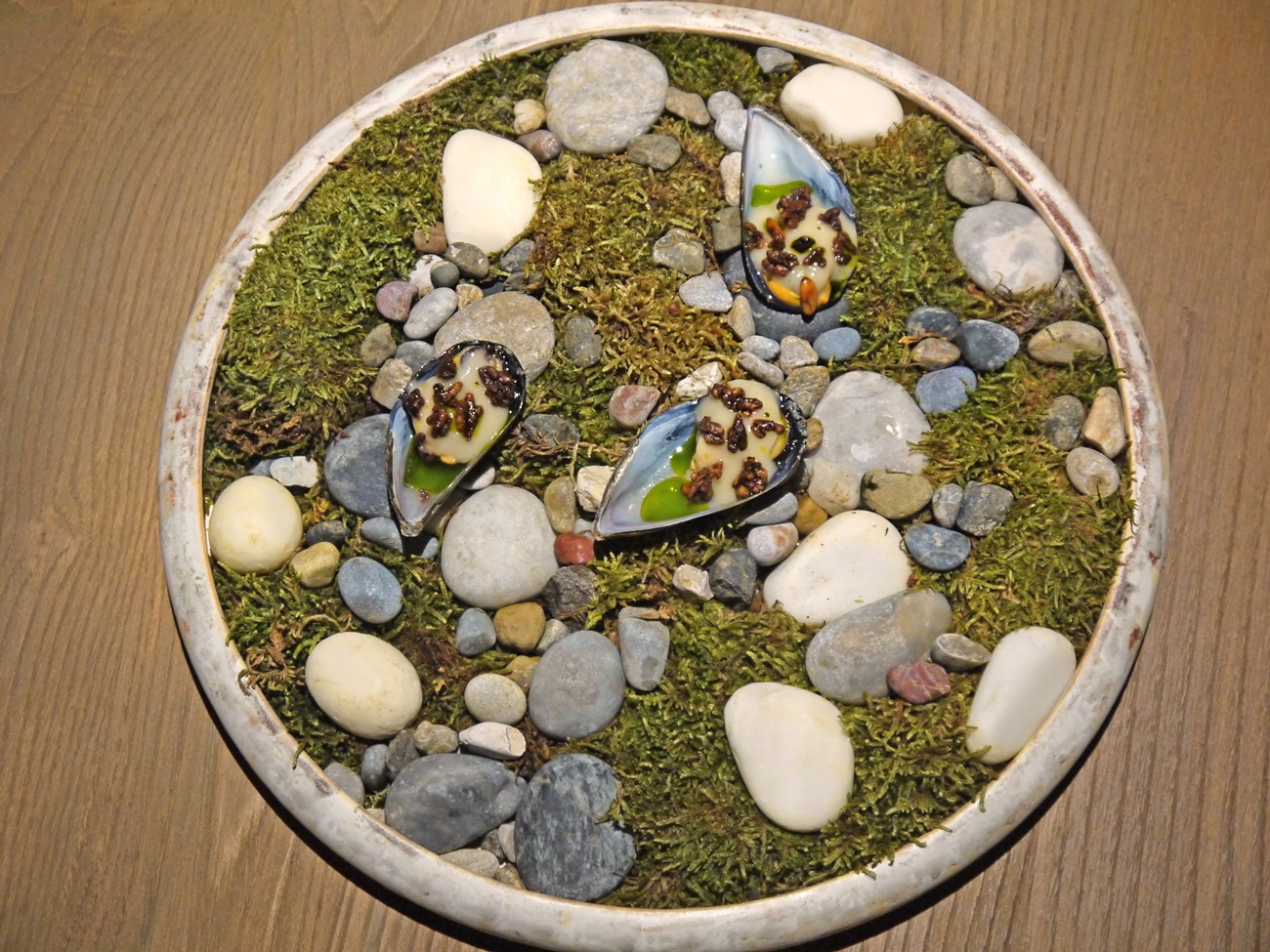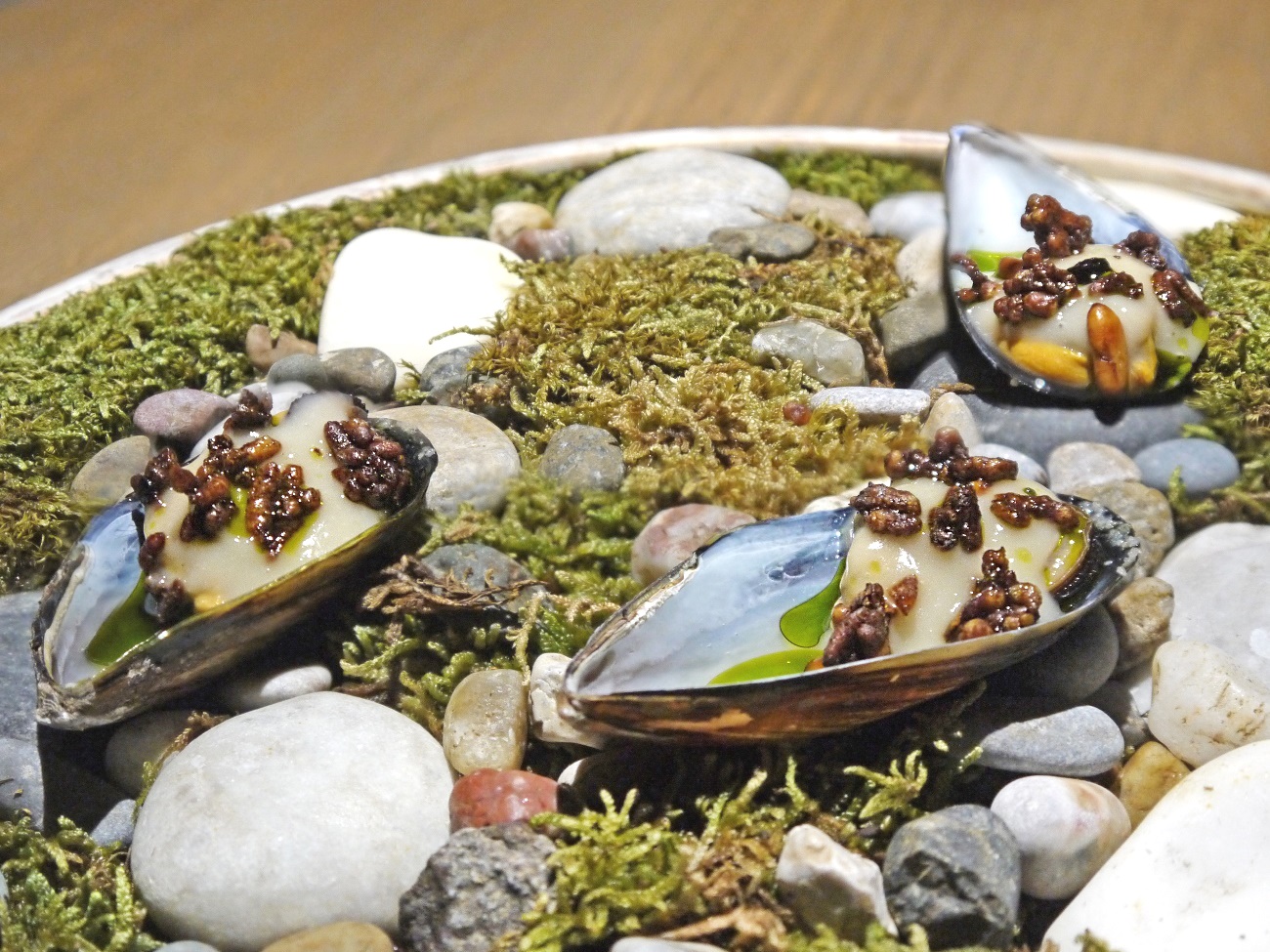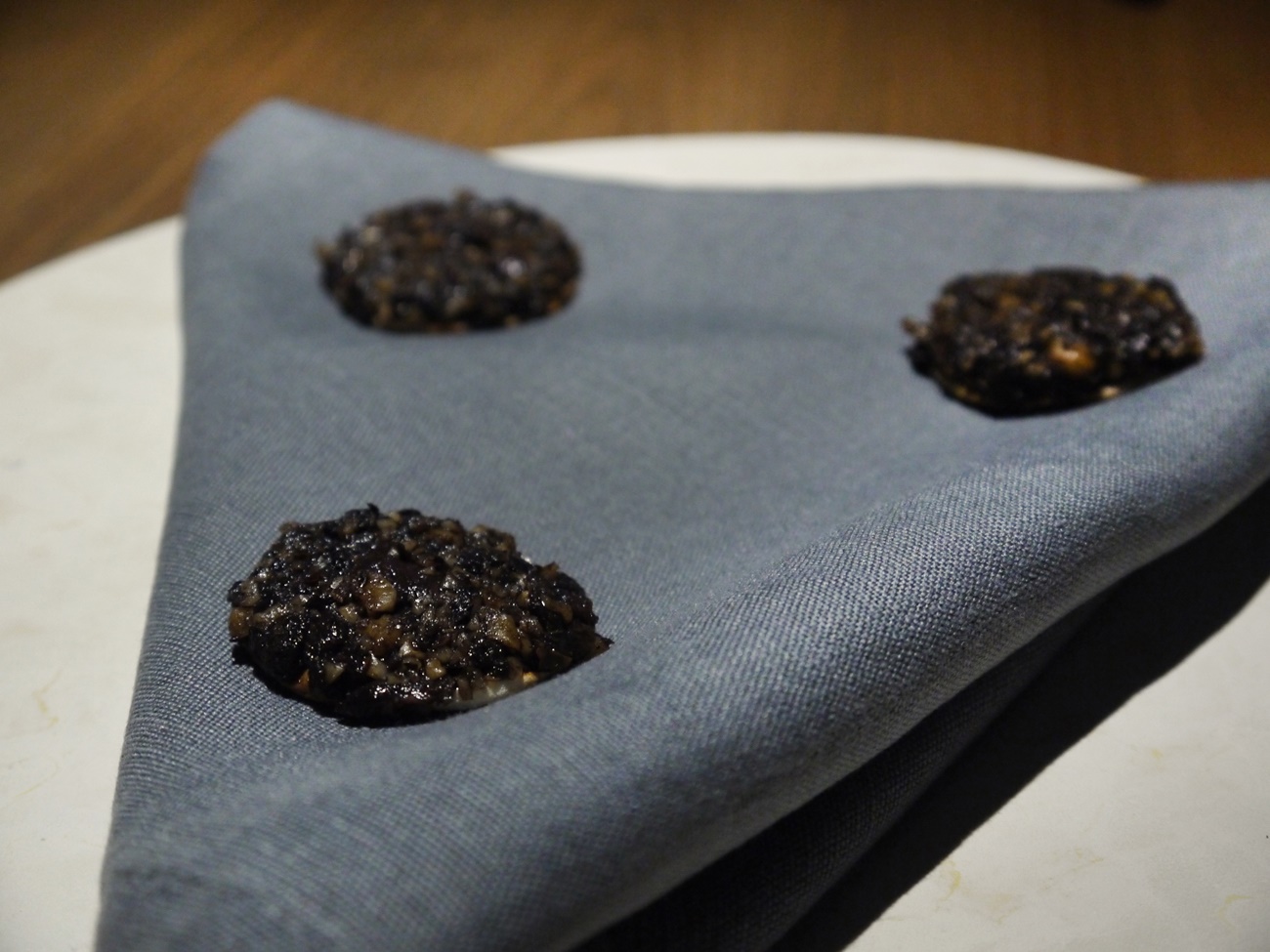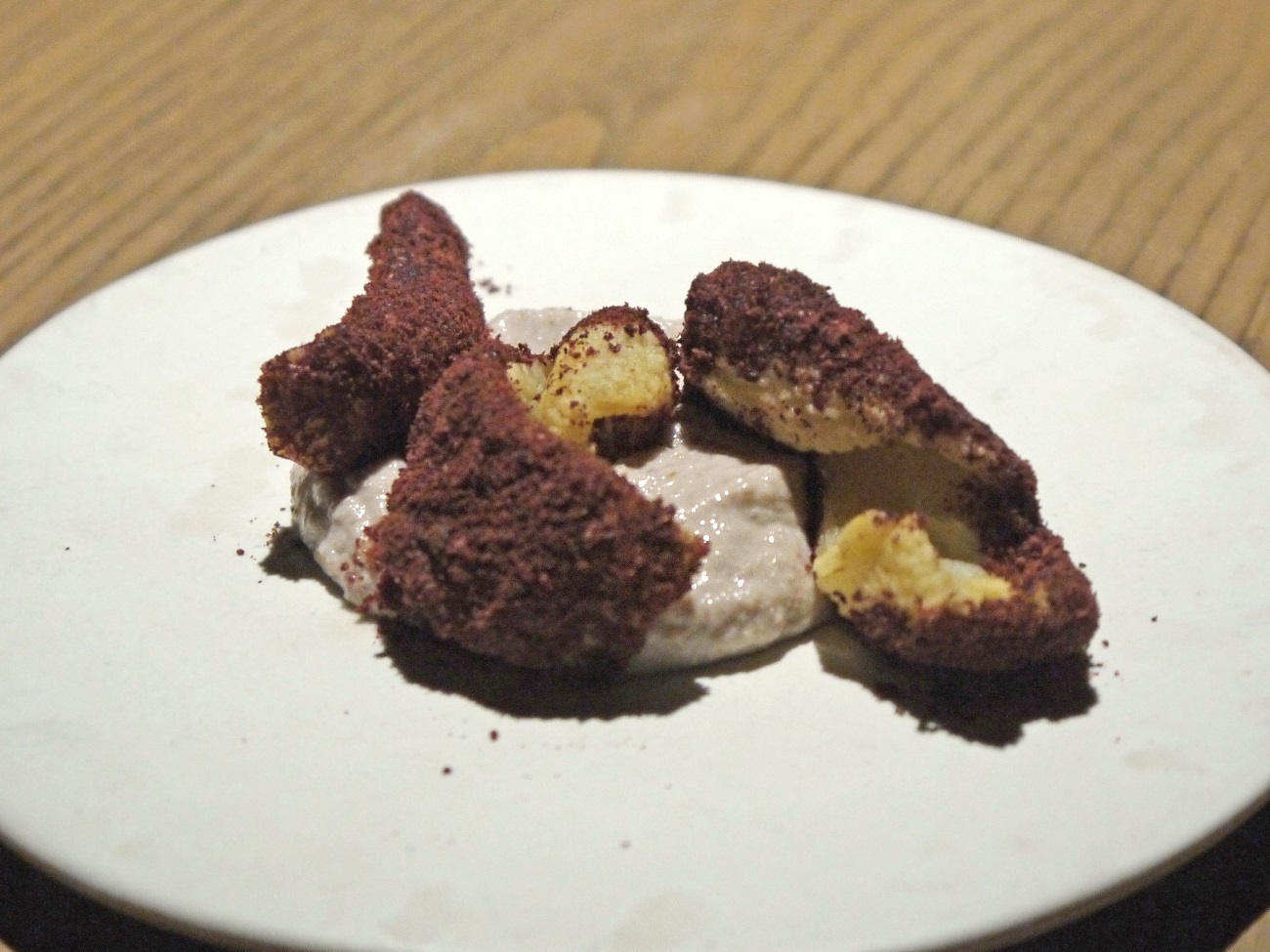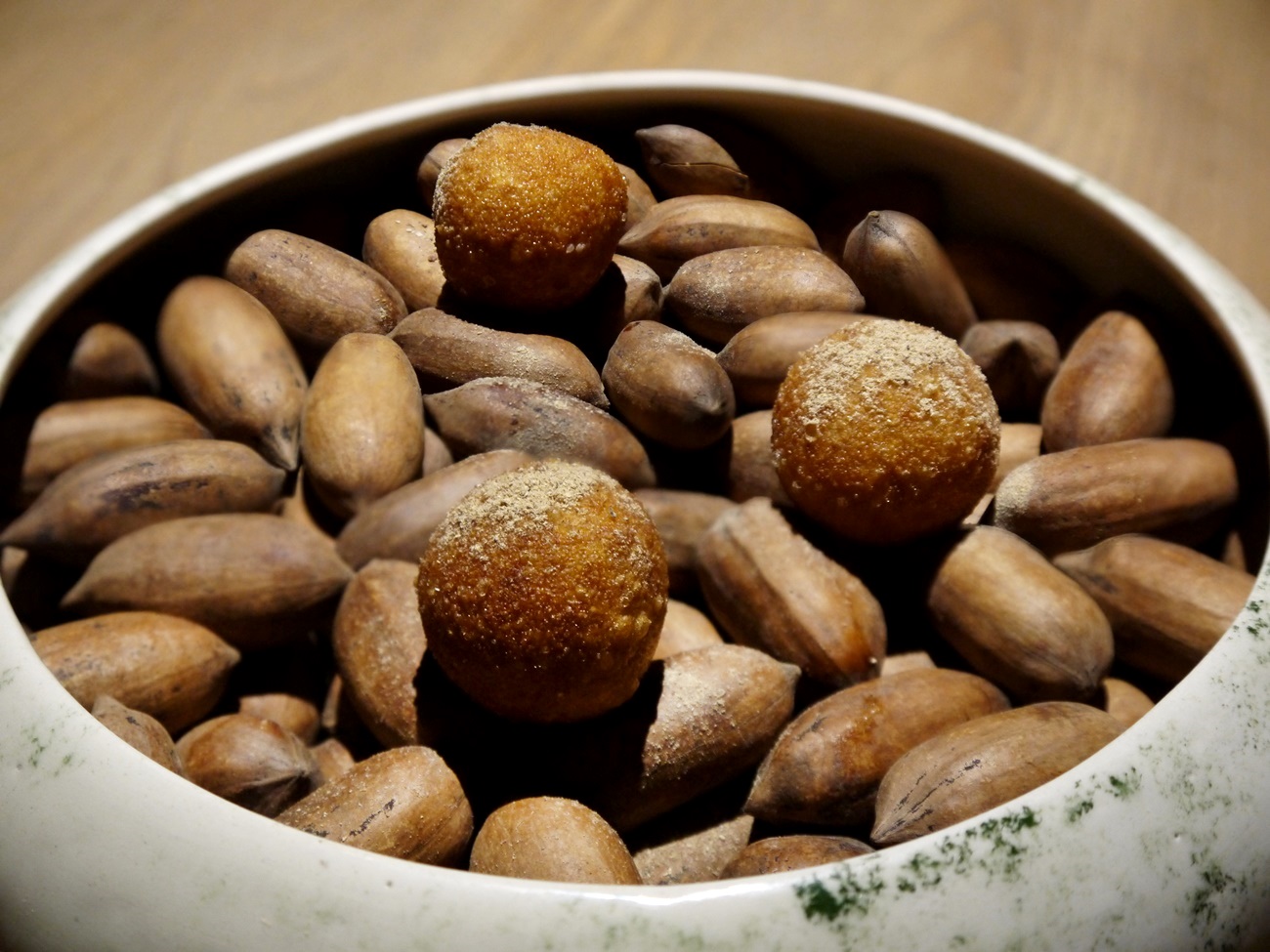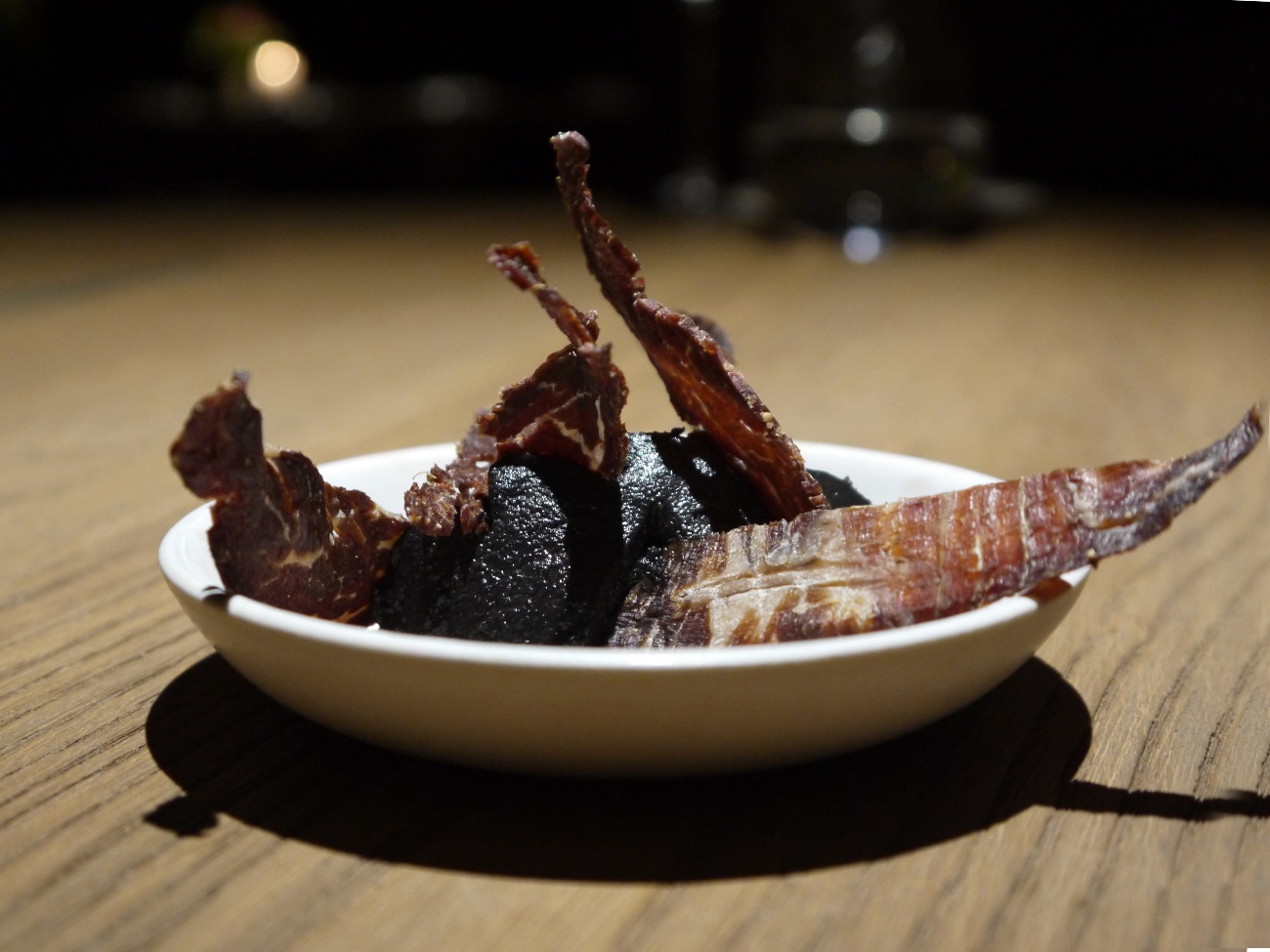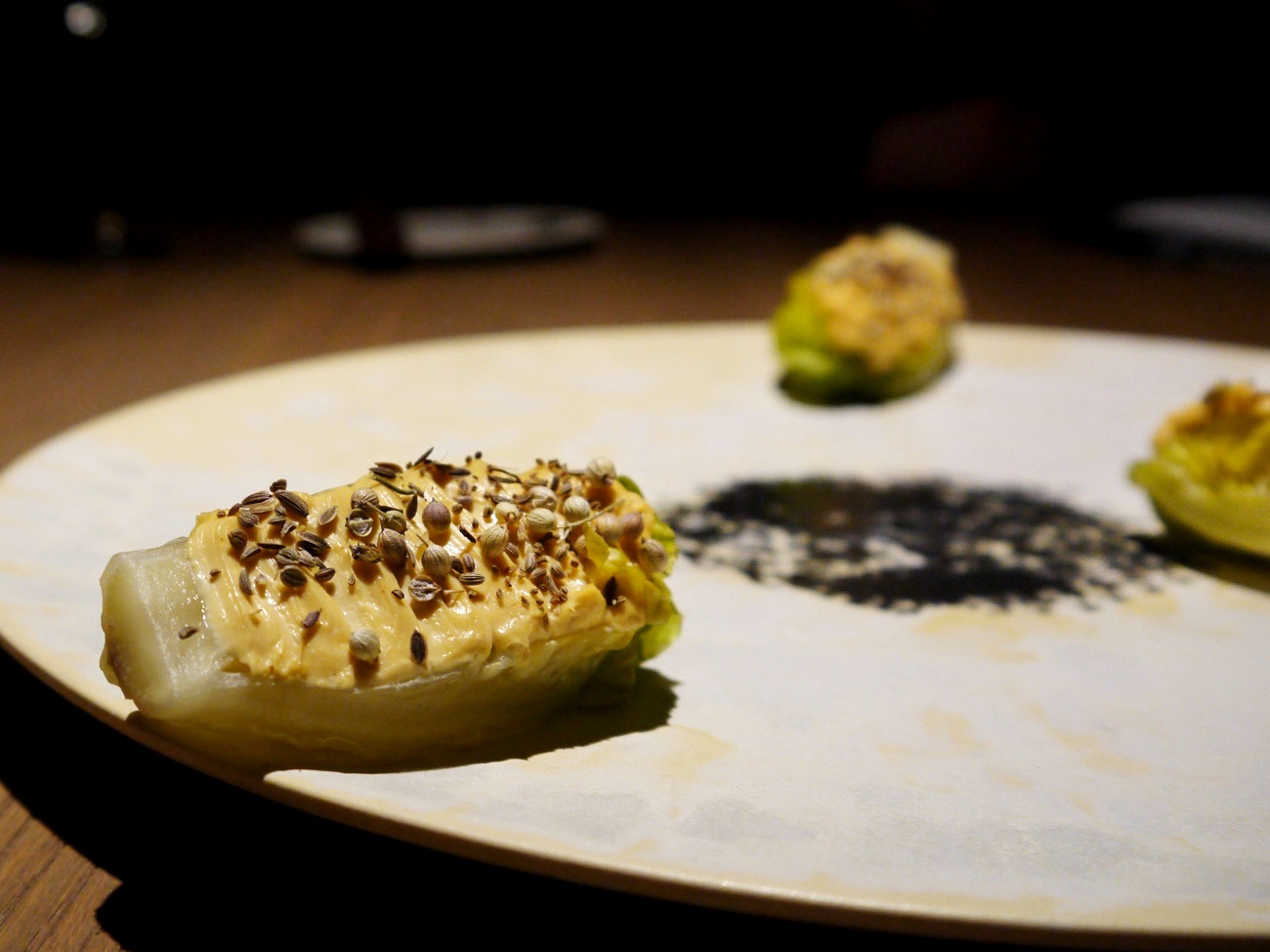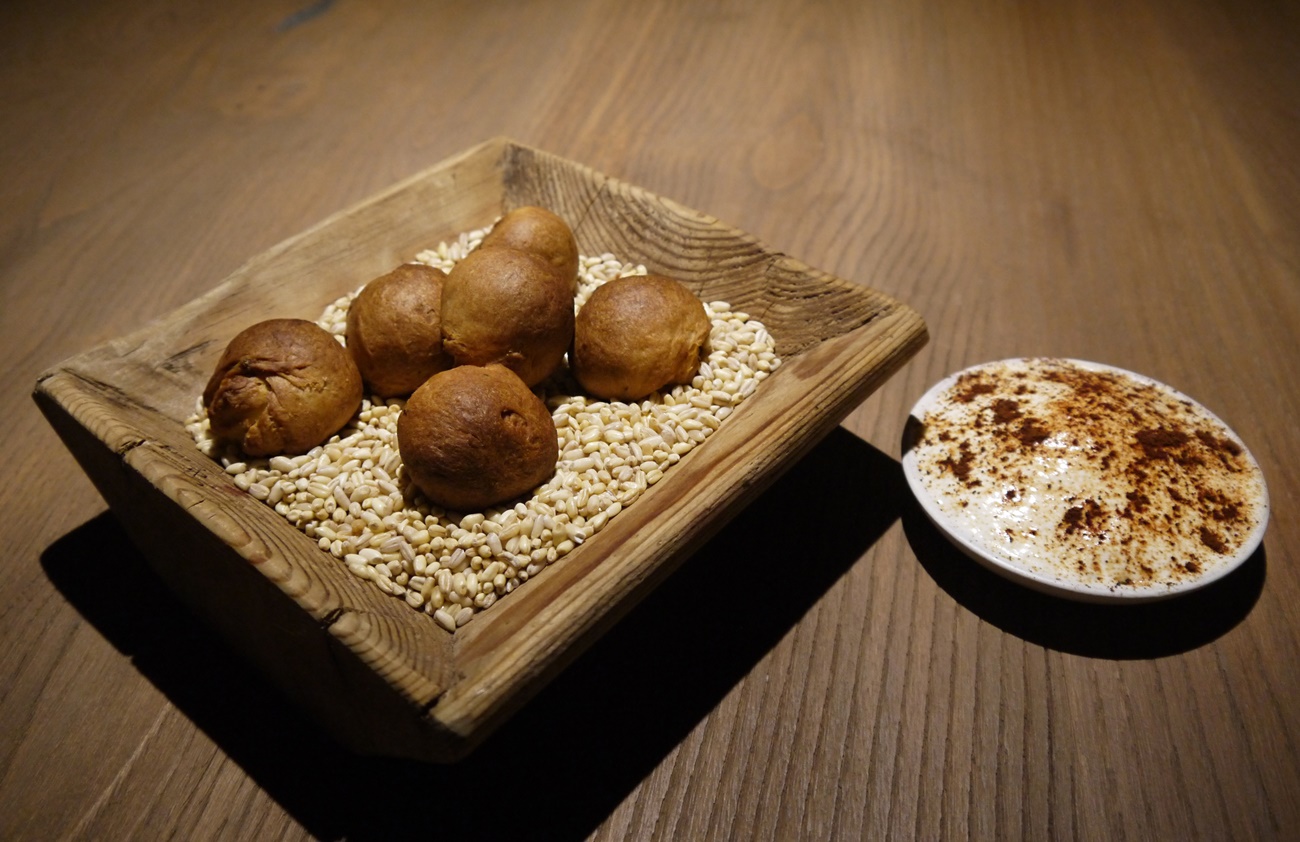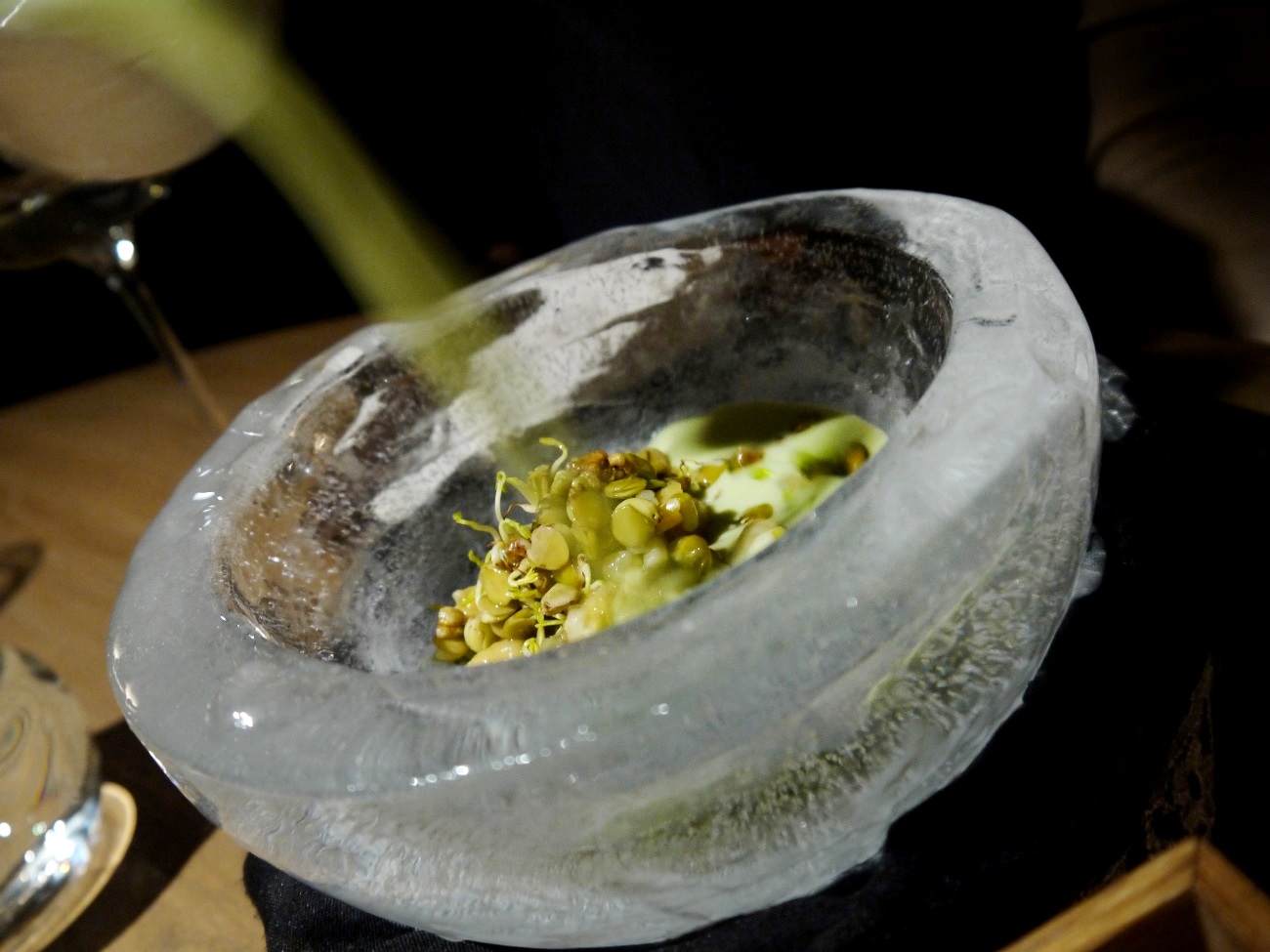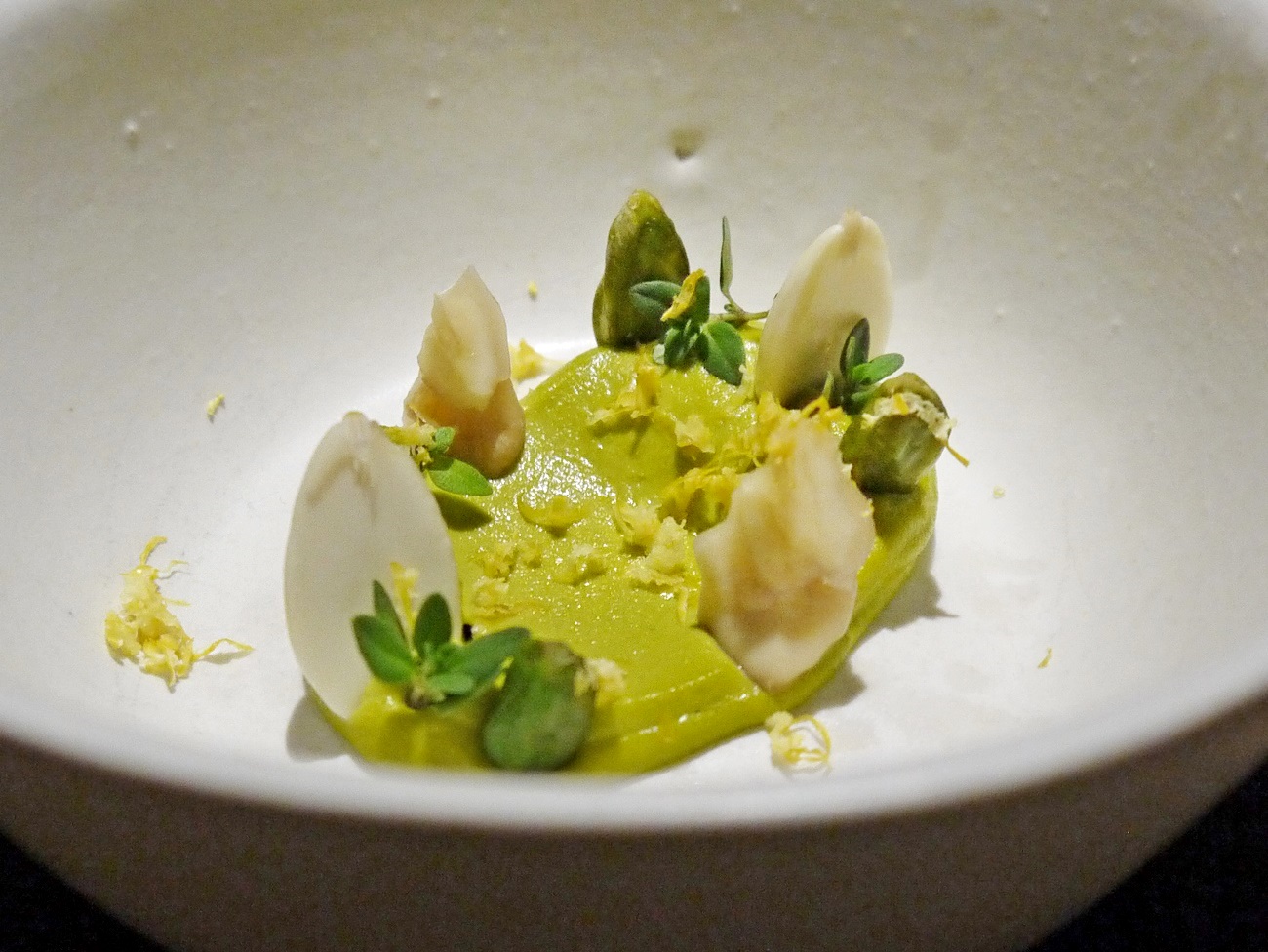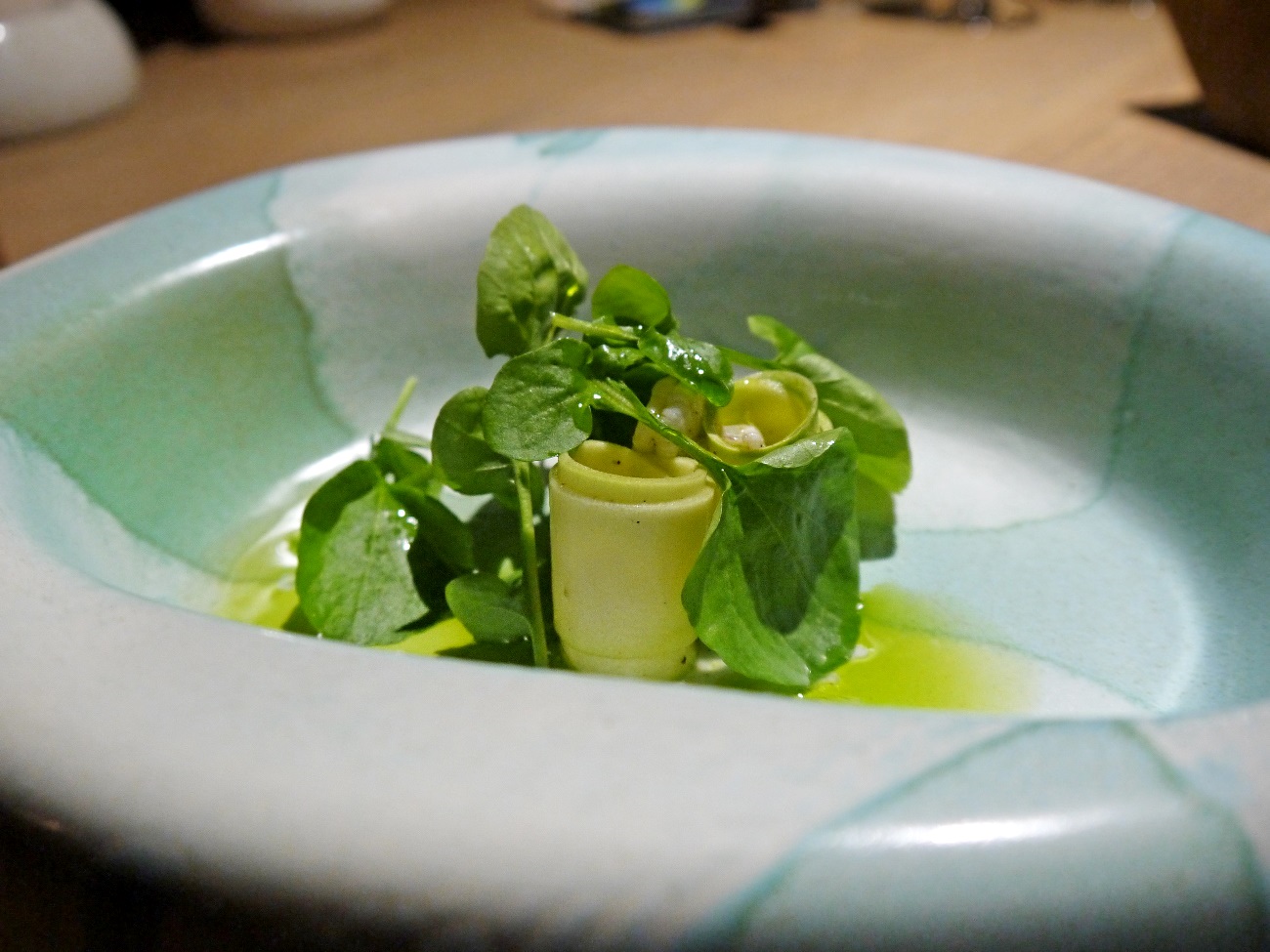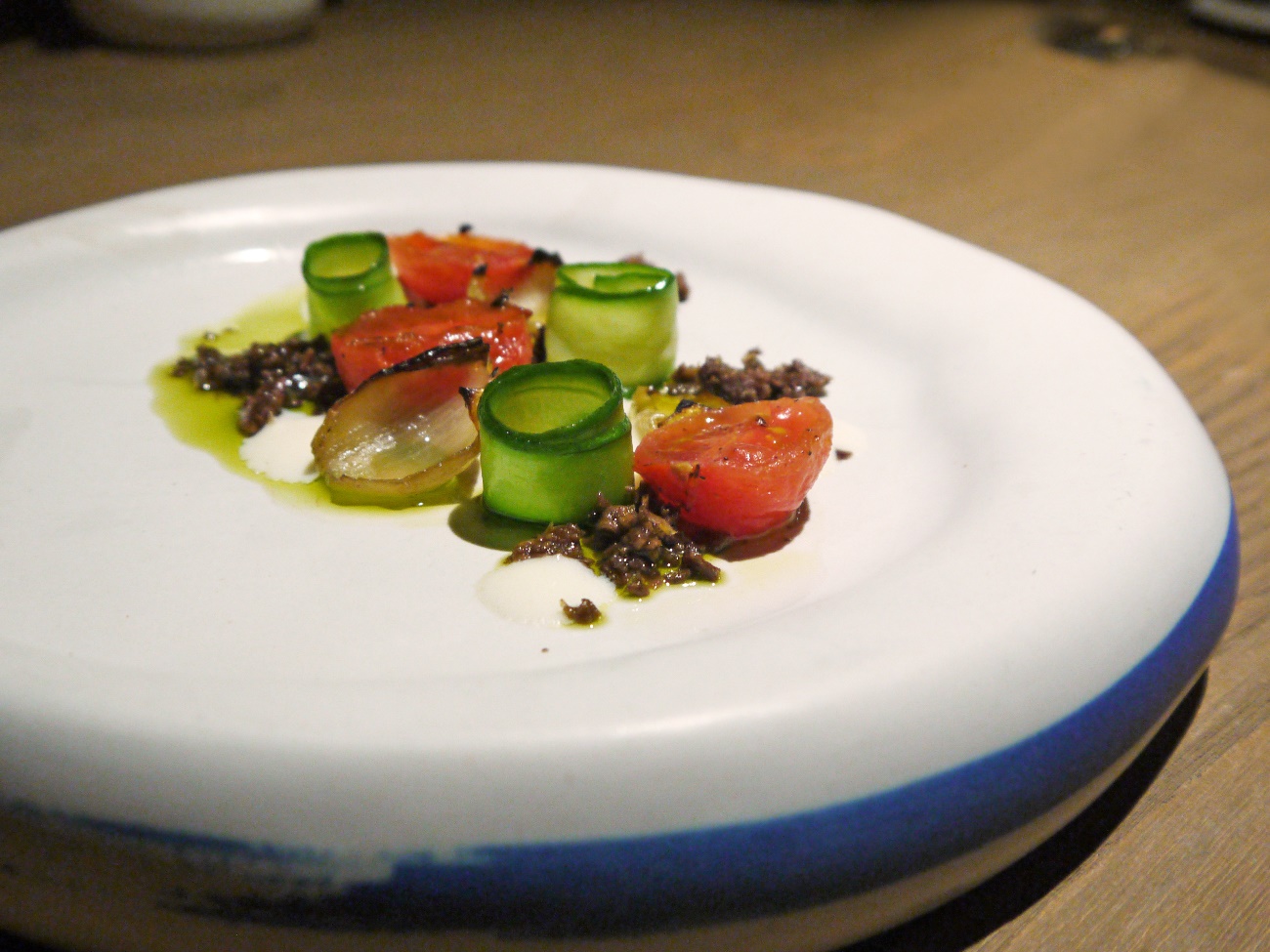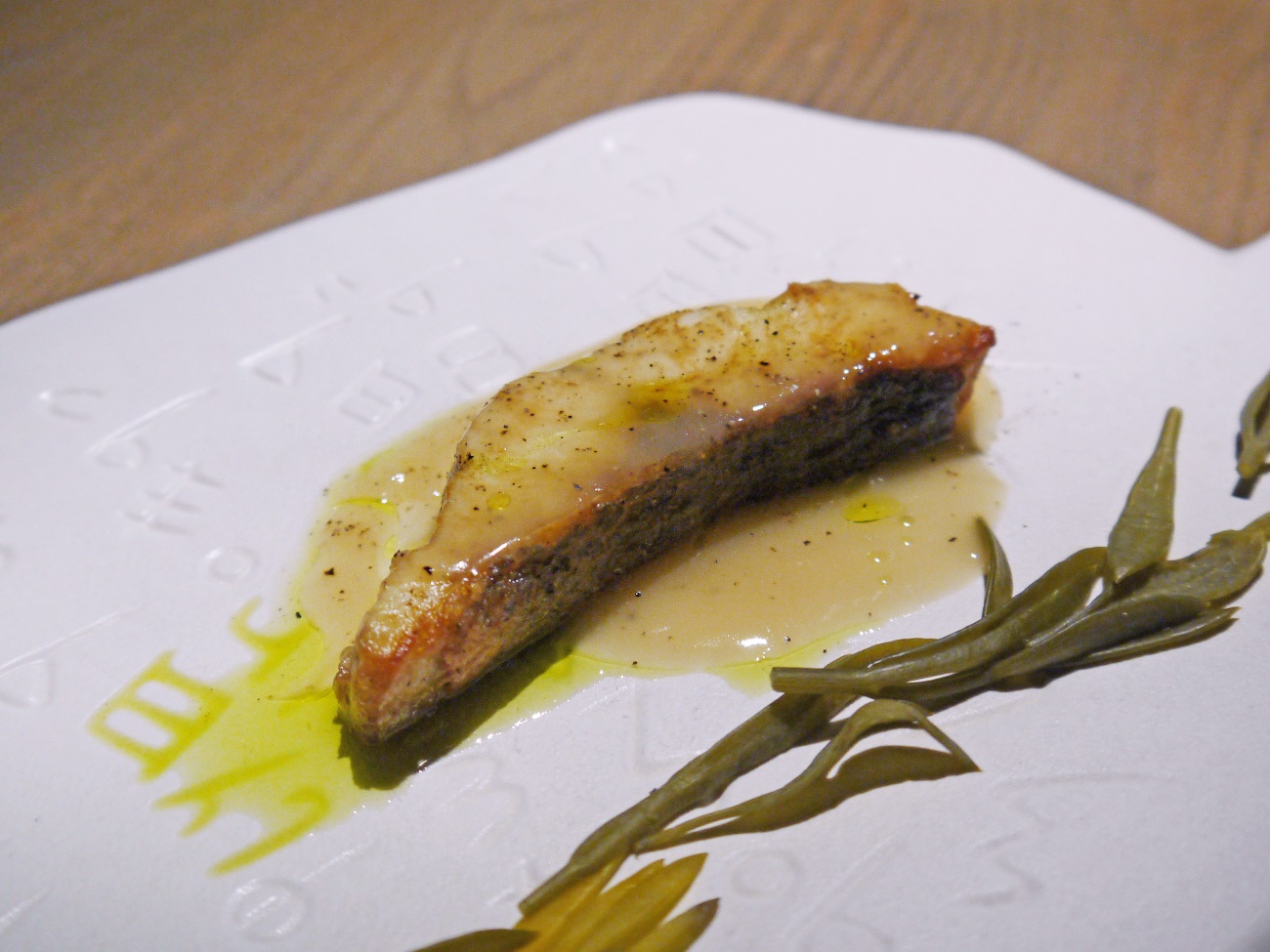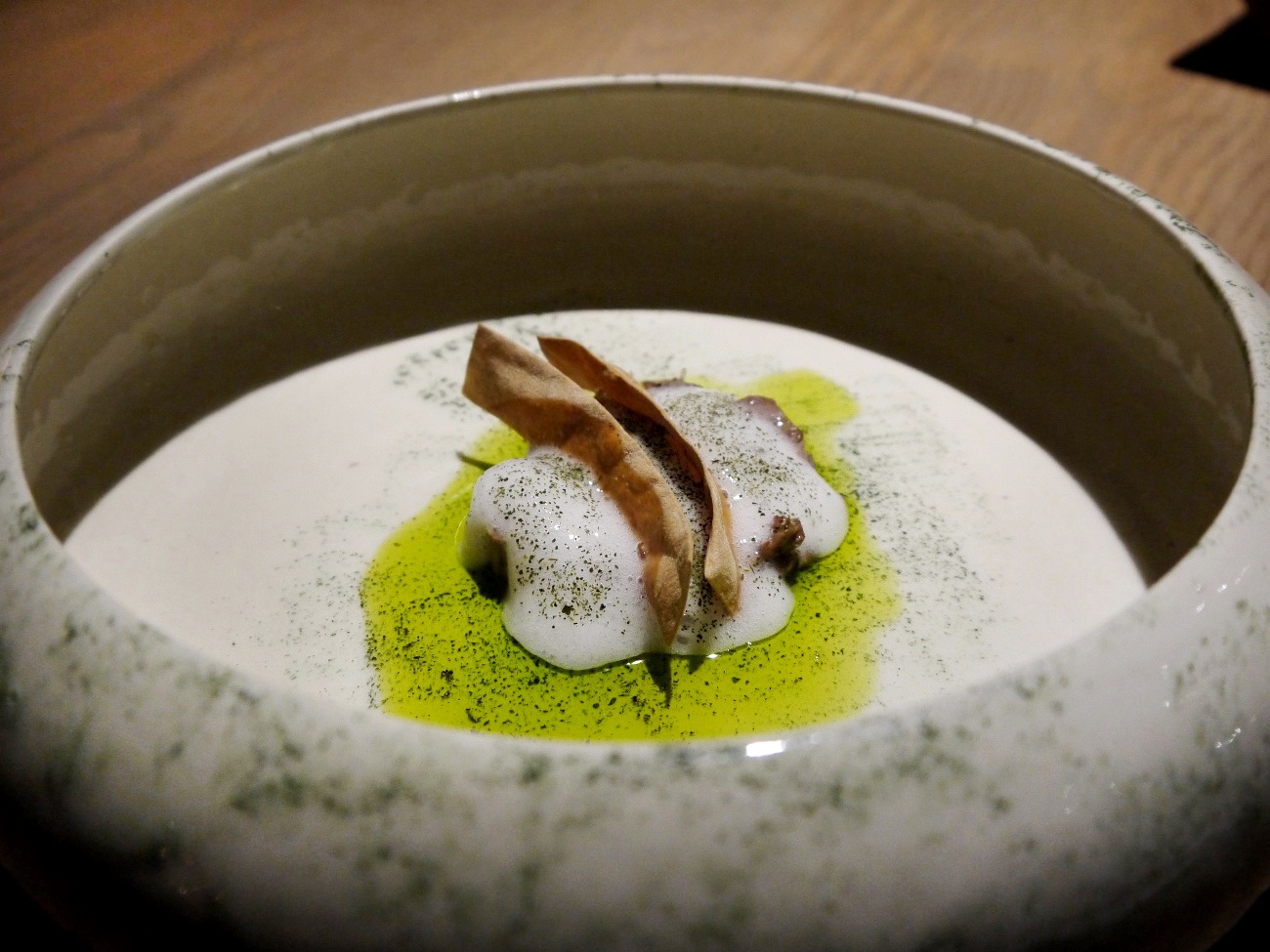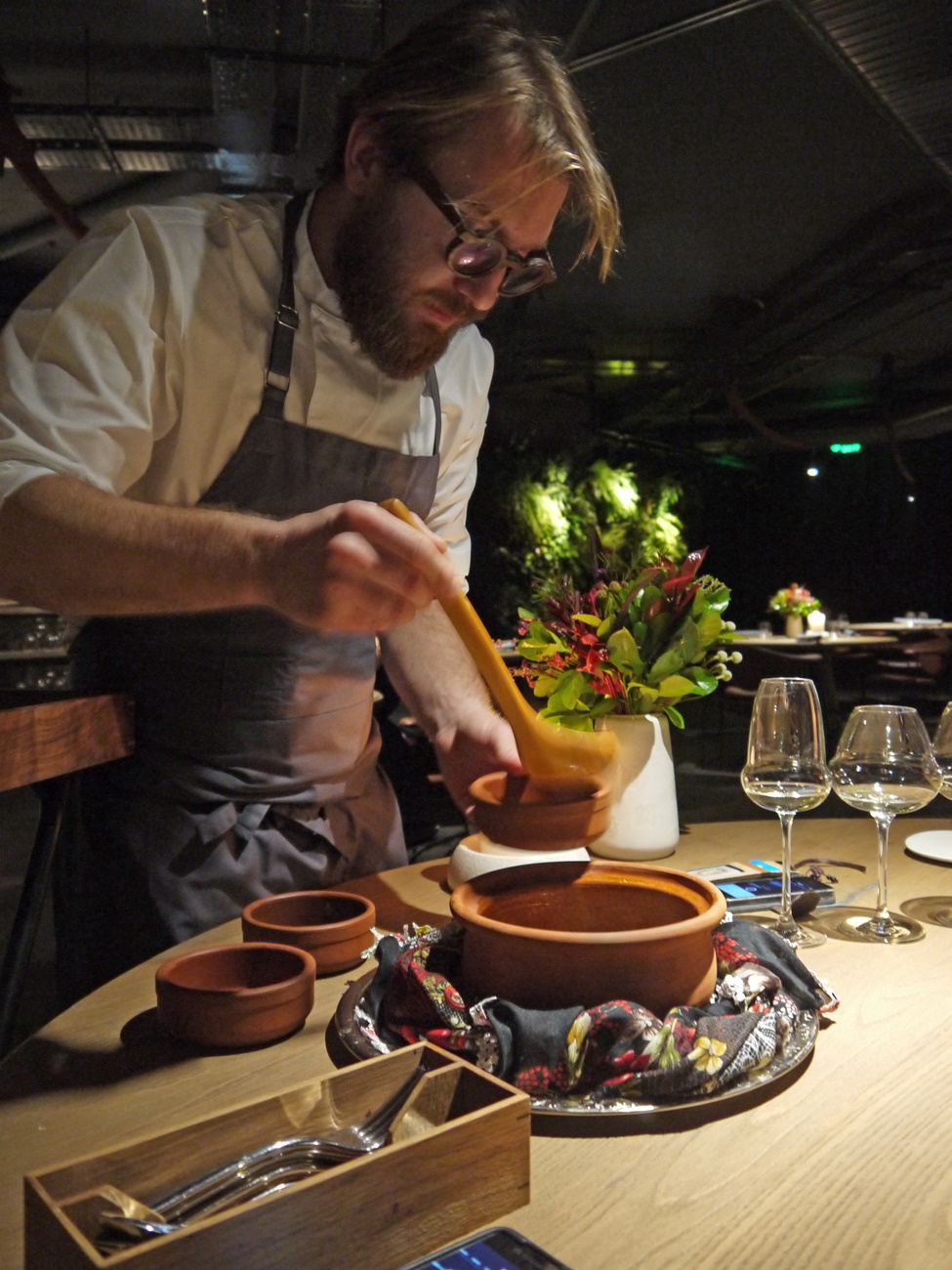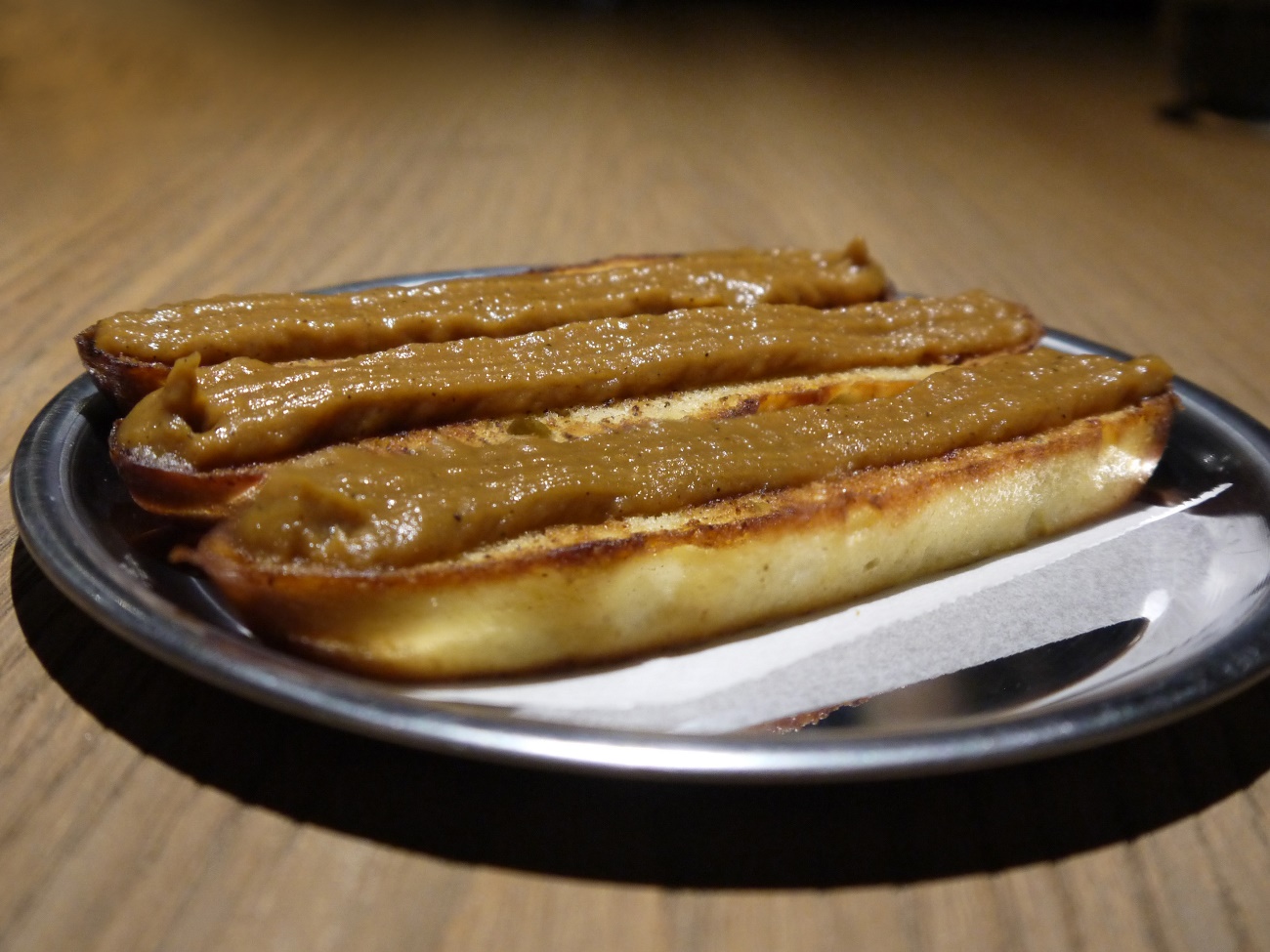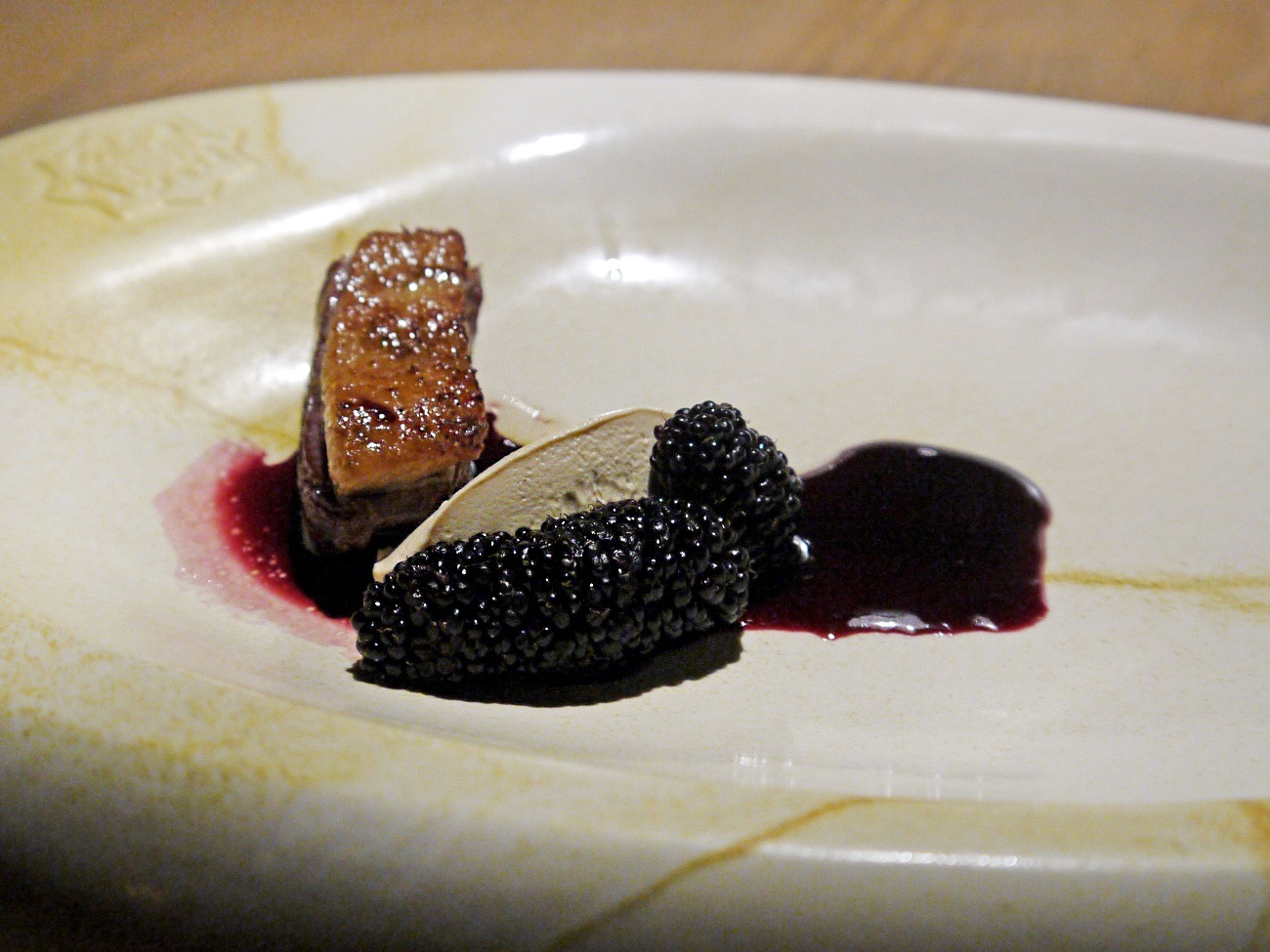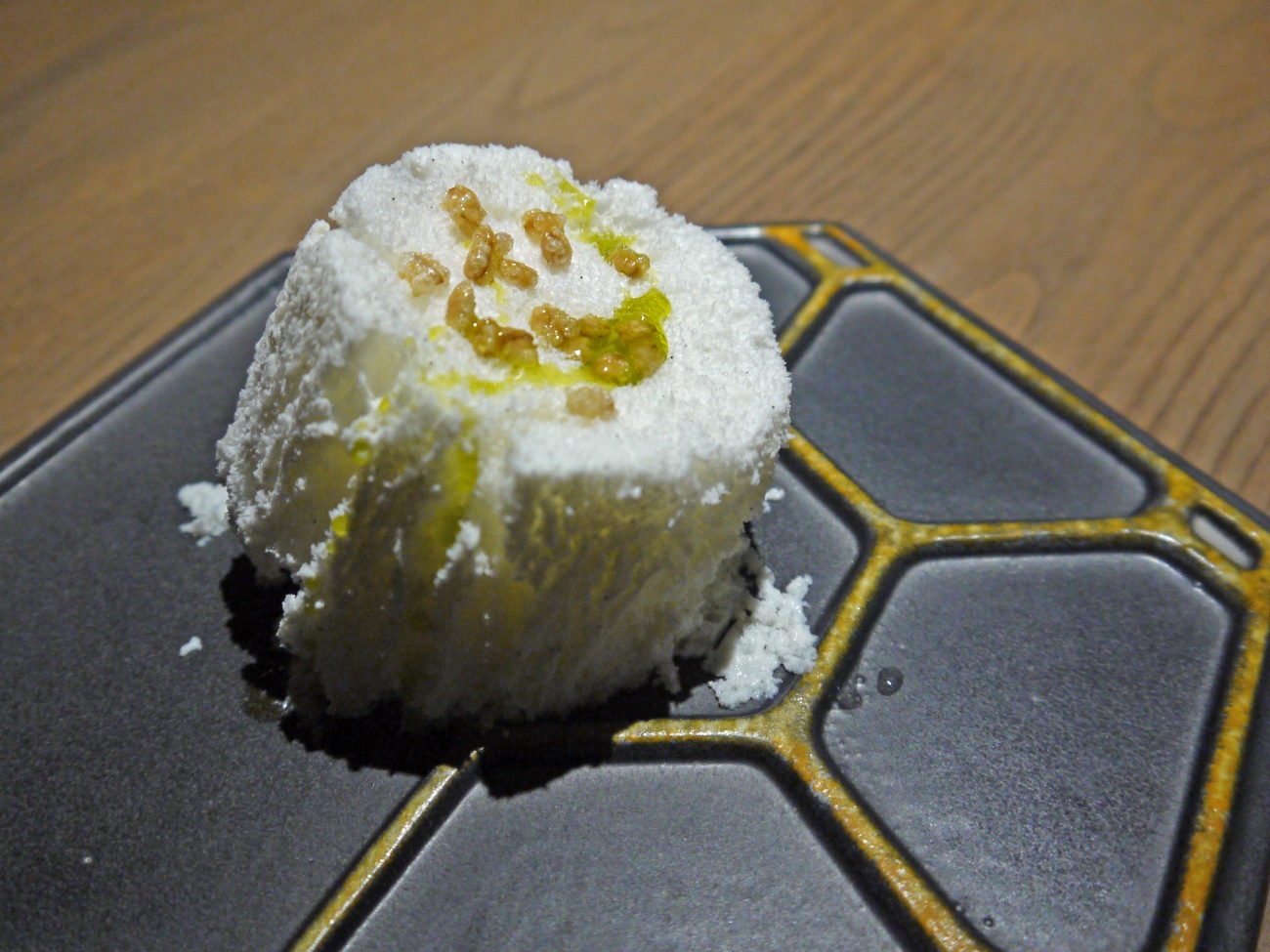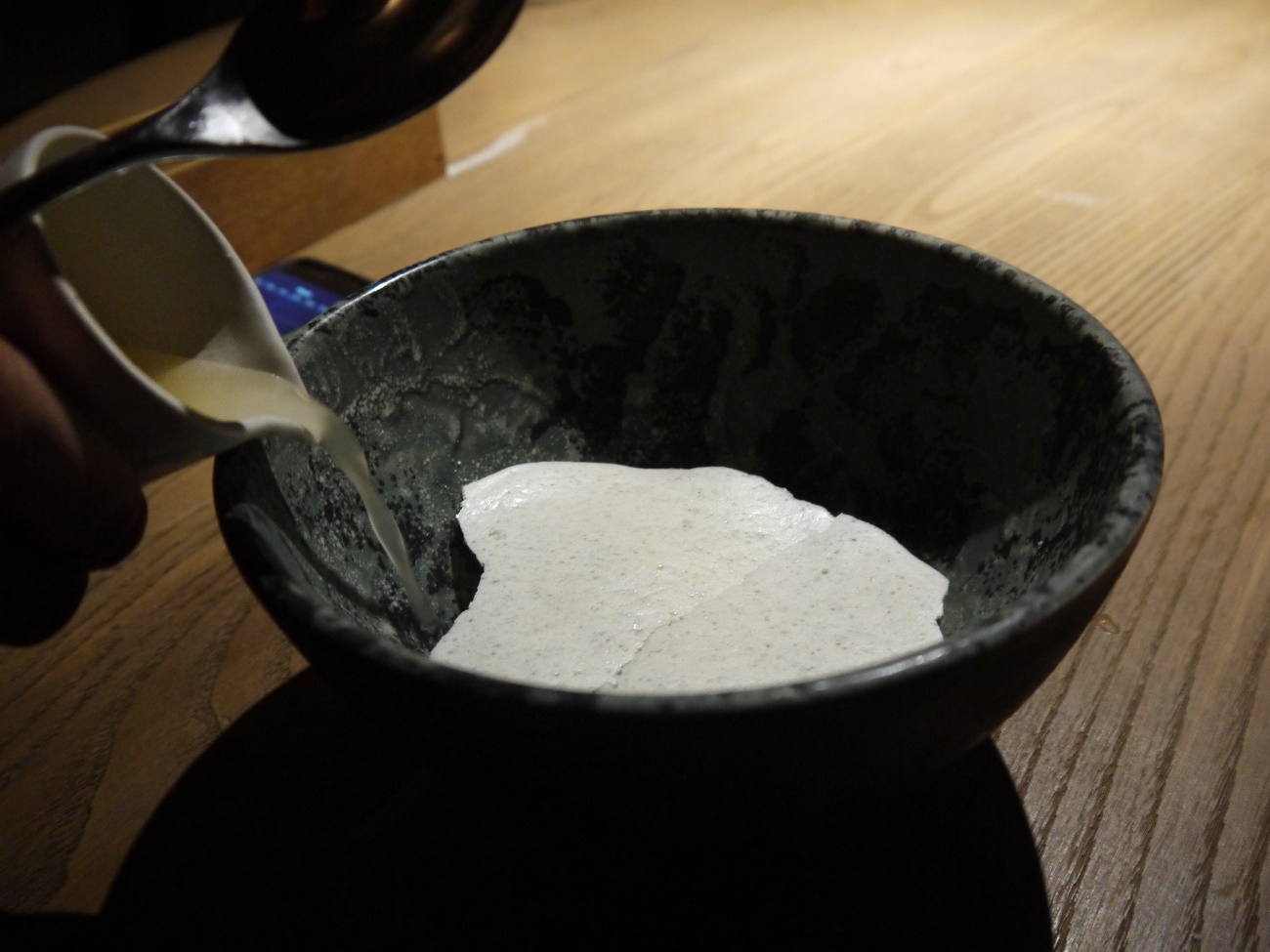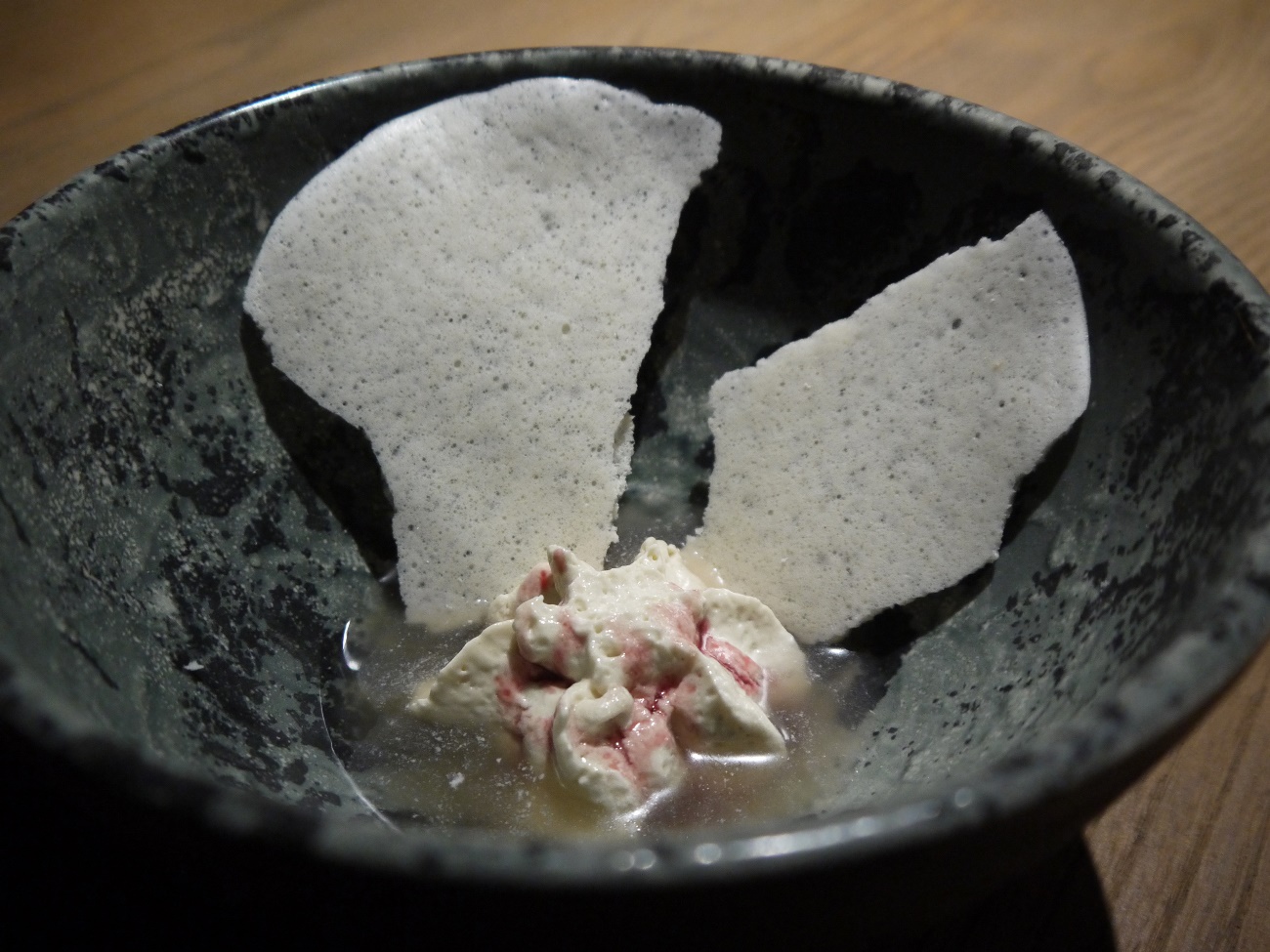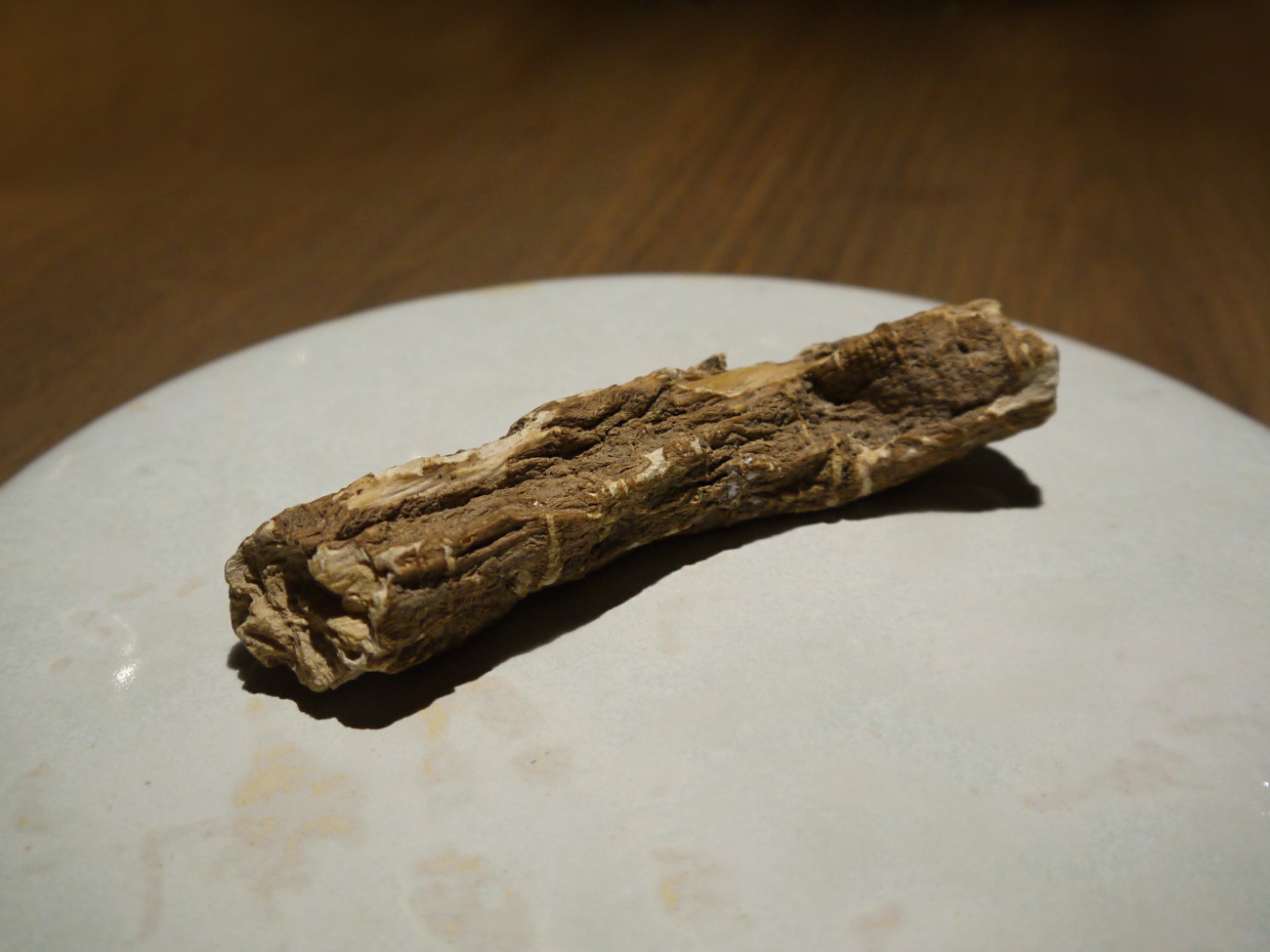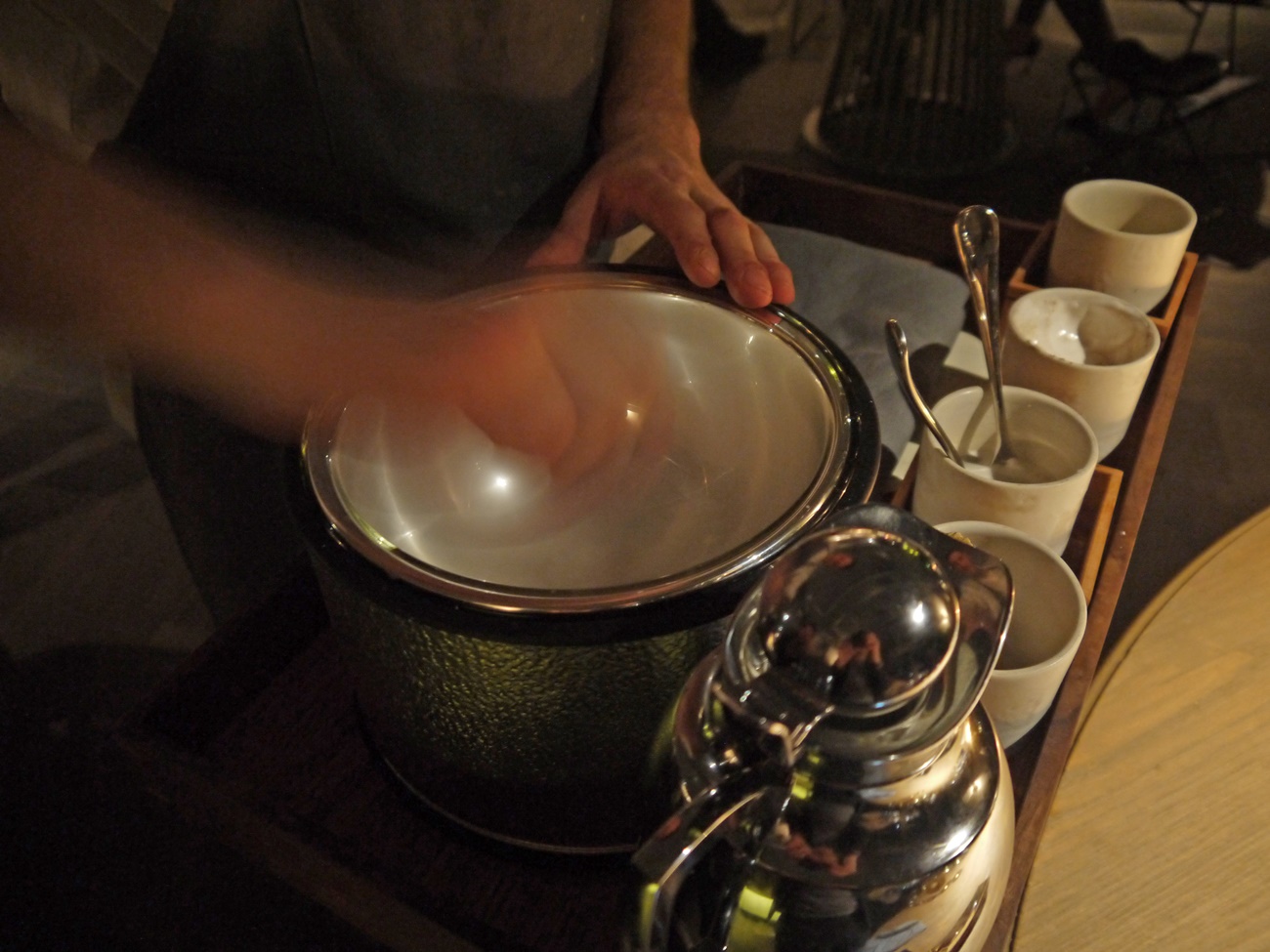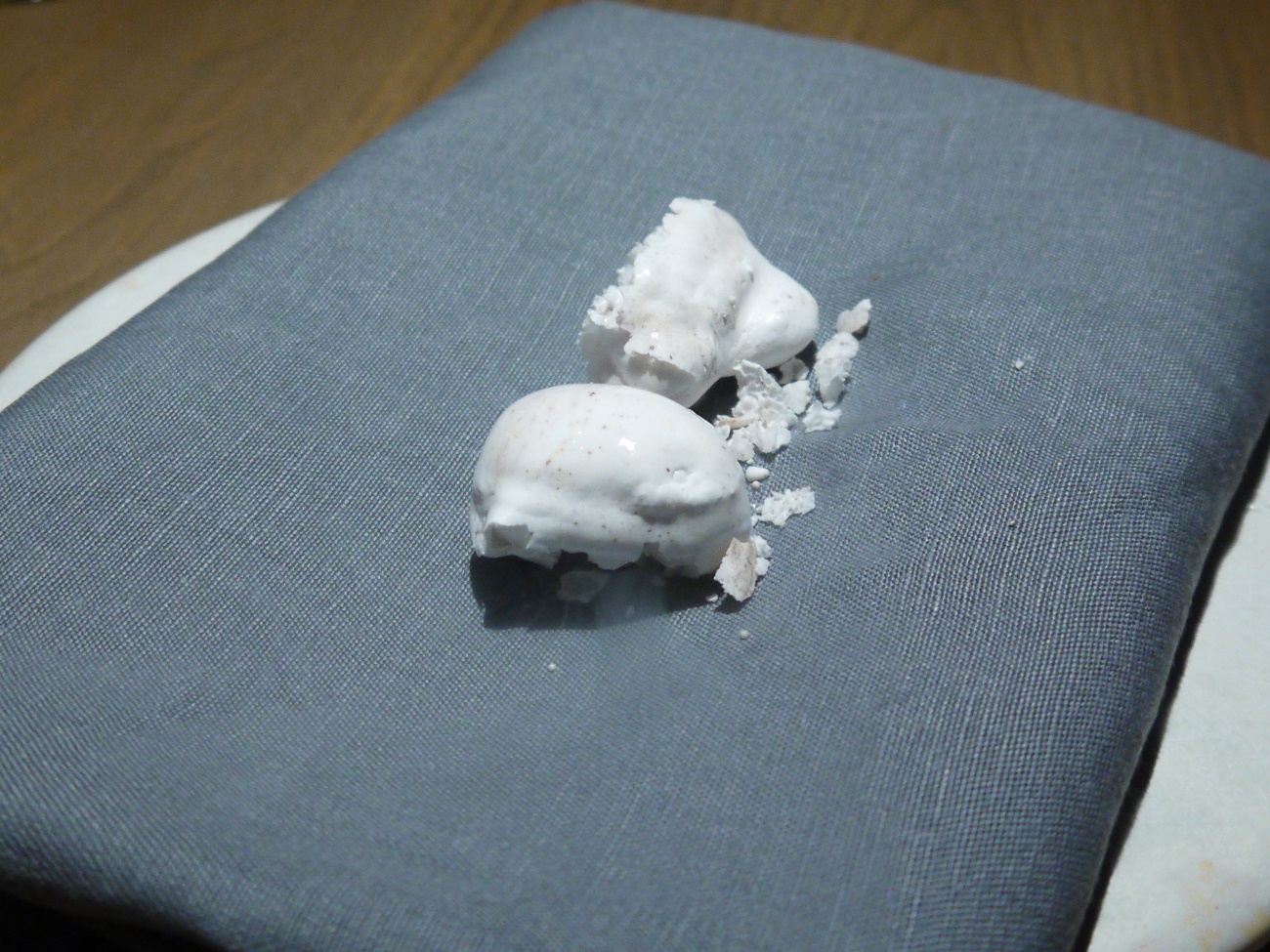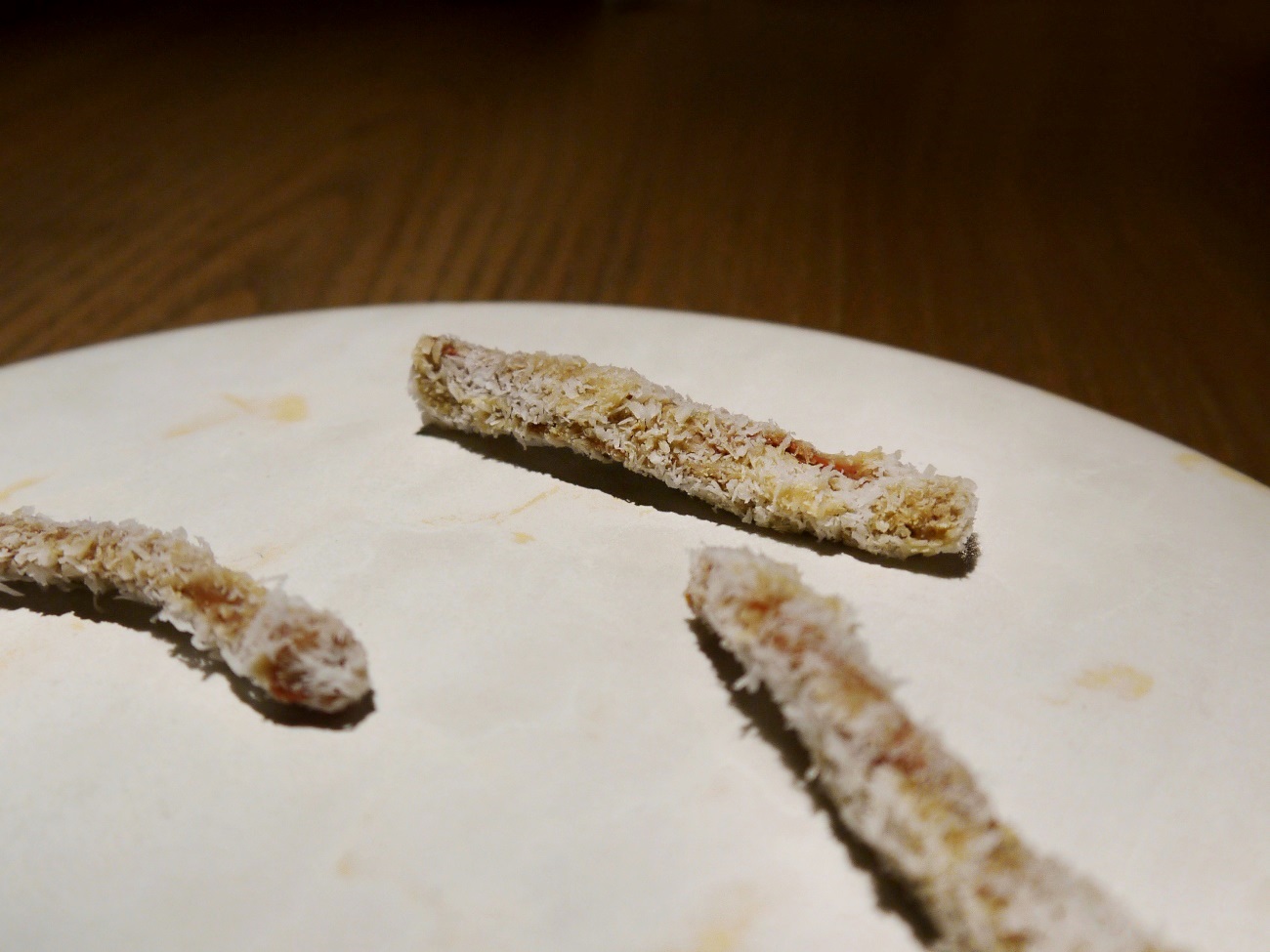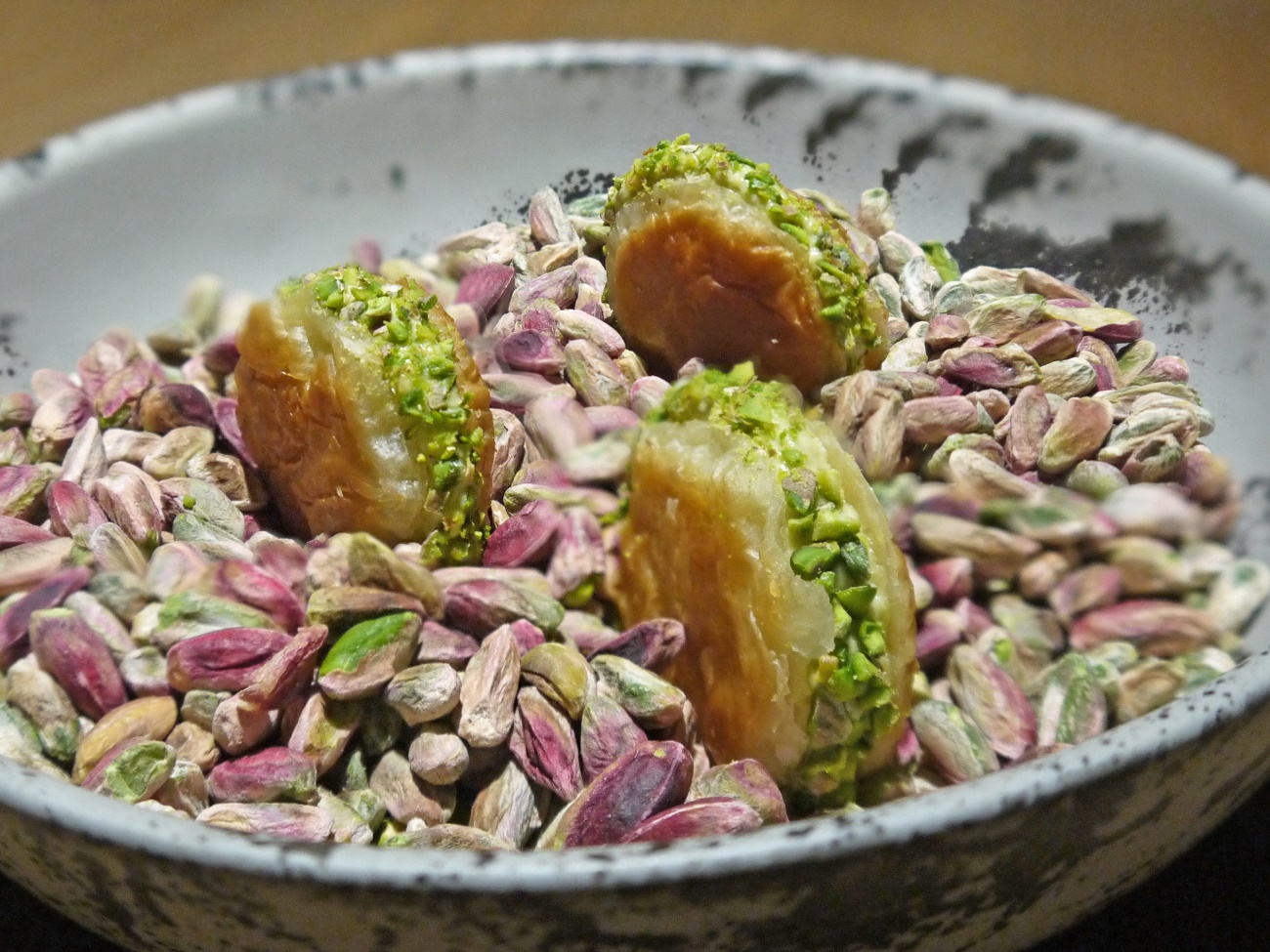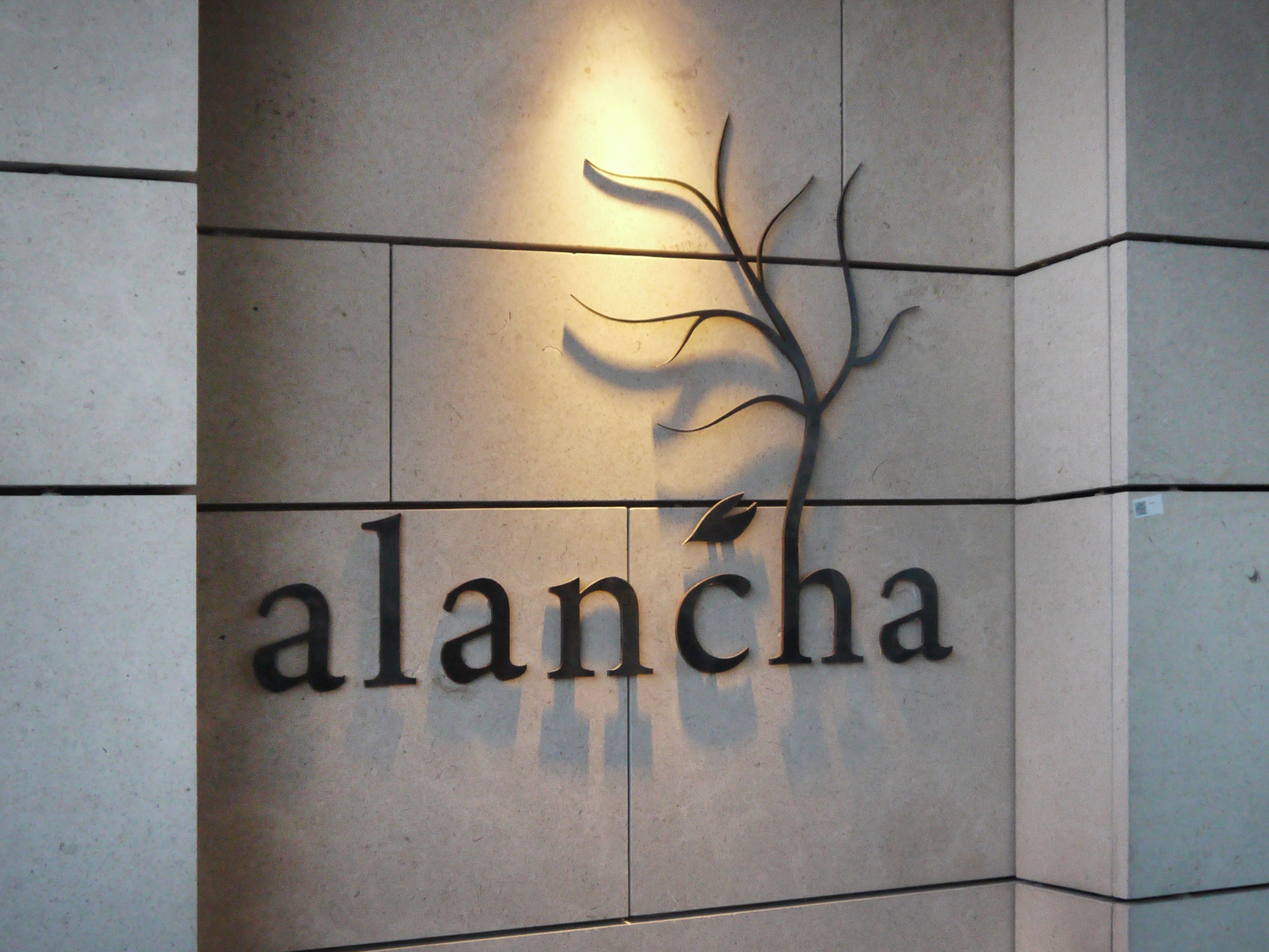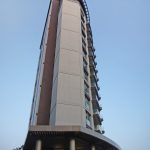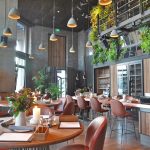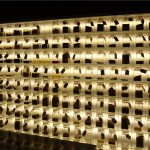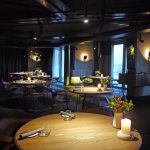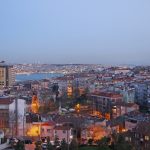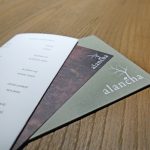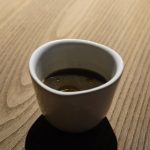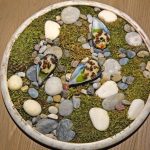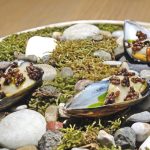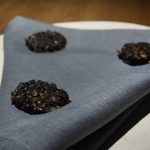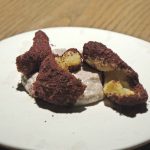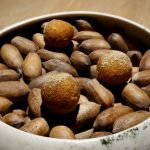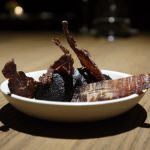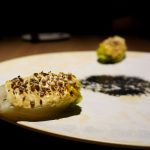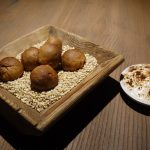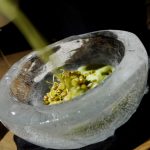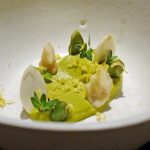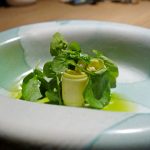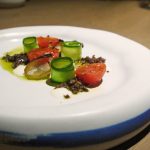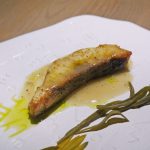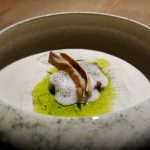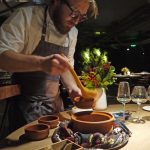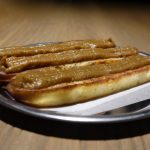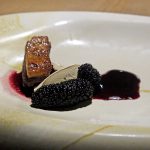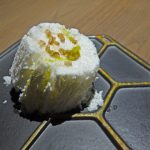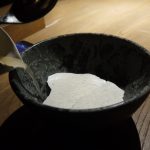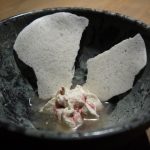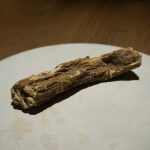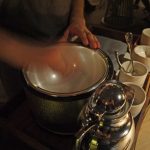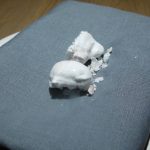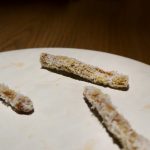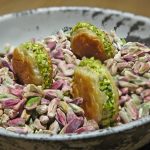CLICK ON THE MAIN PHOTO ABOVE TO VIEW CAPTIONS IN GALLERY FORMAT
Image 1: Who could have guessed that, after 15 years of professional windsurfing and with 6 national champion titles, Kemal would decide to go a completely different route! The success of his two restaurants, near the coastal town Çeşme, came after he self-trained for 3 years, during which time he visited many top restaurants around the world. To bring his creative Turkish cuisine to an international level, Alancha Istanbul was established in early 2015, at the Maçka Armani Residence.
Image 2: Our evening began on the ground floor - Beets, a vibrant dining atmosphere with a live DJ, where guests can experience Alancha's mixology, followed by a four-course meal if a more casual menu is preferred. No cocktail menu was required, since the mixologists create each cocktail based on the individual's taste – which is probably why we enjoyed our cocktails!
Image 3: While exploring the ground floor a little, we found a glass panel on the floor where guests could have a peek at "Kemal's laboratory", the testing kitchen for Alancha's research team. It didn't take long, that Friday evening, for the bar area to get full; and we still had no idea where our experience of Kemal's 18-course tasting would take place!
Image 4: Fortunately, seeing that we were puzzled, the manager led us to a lift next to the bar. This gave us a ride up to first floor, passing through the aquarium-style kitchen which completely blocked off the sound of live music from the Beets. For the next three hours, in this minimalistic, sensual, dark, and atmospheric dining room with soothing background music, we enjoyed a delicious tour of the culinary history of Anatolia - the land where Turkey is now situated!
Image 5: The design of the dining room reminded me of Noma, although here they had a terrace with a view of the Bosphorus river, across to Asia! For restaurants in cities with a large smoking culture like Istanbul, quick access to an outdoor space is always handy for smokers.
Image 6: Kemal named his tasting menu "The Big Migration" of the Turkic tribes to illustrate culinary history from the cultivation of barley 12,000 years of ago to the cultural influence of the ancient Greeks, Persians, Phoenicians and Ottomans. Again, just like Noma, each course was hand-delivered by a chef, with an explanation of the inspiration and concept behind each dish.
Image 7: The first item was fermented chestnut mushroom consommé; a warm and earthy broth just to whet our appetite!
Image 8: If it was still not obvious that Kemal's cooking was heavily influenced by Scandinavian cuisine, it should be from the style of presentation of this course!
Image 9: During our week in Istanbul, we came across many street-side vendors selling midye dolma, rice-stuffed mussel, and this was Kemal's refined version. It was mussels in tiger's milk (citrus-based ceviche marinade), coated with garum, a fermented anchovy sauce used in ancient Greece, Rome, and Byzantium, topped with spiced crispy rice instead of stuffing rice inside. Loved the innovation!
Image 10: Interestingly, we had a lunch at Tatbak that day, a local place known for its lahmacun, often described as ‘minced lamb Turkish pizza’. This mini high-end version with minced meat and walnut cooked in pomegranate molasses was very different from the local version, certainly just as tasty, with a sticky texture from the molasses. Fun!
Image 11: Pieces of deep-fried tripe, dusted with berry powder, with tartare sauce underneath. Similar texture as calamari but softer, and there was a deep fruitiness coming from the powder. Highly delectable food so far!
Image 12: Pişi, a very simple fried dough snack, usually served as part of breakfast. This one had chicken meat inside, with fermented mushroom dust, even though I didn't taste much of the meat as the dough was thick and a bit chewy.
Image 13: One of the highlights of the meal was Bosnian jerky, ultra-paper-thin dried meat with black truffle cream. Who could resist this delicate crispy meat smothered with aromatic and earthy truffle cream? Wow!
Image 14: A rather bland course of baby lettuce compressed in salad juice and garnished with brown butter and mixed spice, including mustard and cumin. Although I appreciated the simplicity of the course, which allowed diners to taste the ingredients, I found the experience similar to that in Noma - just too flat for me.
Image 15: At that point, a much welcomed warm sour dough bread was served, along with an aerated Izmir cream cheese and tomato powder. The bread was quite sweet and cakey while the cream cheese was light and airy - very enjoyable, to say the least! Up to that point, we had been eating with our hands and our waiter arrived with a wooden box loaded with stacks of spoons and forks (yes, influenced by Frantzén), signifying the end of the bite-size part of our meal.
Image 16: Kemal then came out to deliver us a big bowl made with a single piece of ice! It was chilled wheat soup traditionally served with ice in a regular bowl instead. The refreshing herby yoghurt soup included a mixture of barley, chickpea and beansprout, to name just a few of the ingredients, resulting in a fun texture; powerful in taste of raw-grassy-freshness like 'eating spring'!
Image 17: Gaziantep – a city on the southern border of Turkey, known for its pistachio production, and hence where the name 'antep pistachio' came from. To highlight the raw sweetness and distinctive bright lime-green colour, Kemal made a very simple dish of creamed pure pistachio, decorated with pieces of raw walnut, almond and lemon thyme, with grated lemon zest on top. The sweet nuttiness was amazing, and the touch of citrus brightened it up even further! What an excellent way to showcase Turkey's wonderful ingredients!
Image 18: Anatolia is a region strongly influenced by ancient Greece. Next on the menu was Raw, inspired by the cuisine in Crete - ingredients such as zucchini, spring onion, water cress, and raw baby shrimp. Even the plate itself was inspired by the shape of Crete! I appreciated the historical reference, but the dish lacked excitement and was my least favourite course of the night.
Image 19: Another "Raw" dish, this time a grilled Greek salad, consisting of tomato, cucumber, feta, thyme oil and bitter Greek olive crumbs. Kemal emphasised that it wasn’t meant to be a complex dish, just the pure taste of Greece. Creative tableware using the colours of the Greek flag!
Image 20: The Phoenician culture was another that hugely influenced Anatolia. Since the Phoenicians invented the alphabet, Kemal designed this plate to feature scripts depicting a harvesting season. Very imaginative! Sea bass accompanied by pickled sea fennel and covered in garum, the salted anchovy sauce appeared earlier.
Image 21: A trip to Kemal’s hometown, Çeşme, for Söğüş, a traditional lamb's head snack apparently great for hangover and typically sold by street vendors served in lavash bread with parsley. This, of course, was a high-end version! Using the soft meat from the cheek covered in a foamy brain sauce and finished with crispy lavash and drops of parsley oil. Soft and moist, but very light; it needed more intensity.
Image 22: Of course, for the history of Anatolia, they couldn't miss out the Persian influence, so here was a meat stew dish Yahni in Persian inspired clay pot.
Image 23: Rather than serving traditional meat and onion stew, Kemal captured these flavours in a broth with slices of pide bread topped with caramelised onion purée. The soup was packed with umami, and I later confirmed with Kemal that his tasty twist to the soup was achieved by using kombu. No wonder! And, better yet, the bread with onion was as seductive as the soup! Certainly my favourite course of the meal.
Image 24: The main course of the meal was goose with berries and beetroot sauce. Very well done, without being too ‘gamey’, and I particularly liked the slight crispiness of the skin. Although described on the menu as an 18-course meal, it didn’t feel too much since the meal was more like a series of amuse bouche.
Image 25: And now the first dessert - an airy mousse of yogurt, drizzled over with ginger oil and caramel with beetroot inside - sounded a little odd, but it provided a much needed contrast in texture to what otherwise would be a too single-dimensioned dessert.
Image 26: Kemal then explained that if, at this stage, he was to serve a traditional sweet tahini bread roll, it would be heavy and so he replaced the bread with a thin milky crispy and poured over sour dough liquid…
Image 27: … with tahini vanilla cream underneath. The chilled liquid was refreshing and who wouldn't enjoy the combination of sesame, vanilla, and cream!
Image 28: Then we were served something called kerepiç, soapwort root, which was first boiled and extracted, laced with cinnamon and whipped with cream…
Image 29: ... before freezing it instantly in liquid nitrogen! For dramatic effect, a trolley was rolled out next to our table overflowing with vapour. It's a great example of how ideas have slowly spread out from top restaurant. It's now almost two decades since Heston first used liquid nitrogen in his restaurant, but the technique is still spreading across the globe and continuing to bring that "wow factor" to a dining experience.
Image 30: The end product of this high-tech version of kerepiç was like a frozen marshmallow!
Image 31: Over the last few hours, Kemal surely did a great job of showing the world that food in Turkey is not just about kebab! The sweet final bites to end the evening… Cezerye, a Turkish confectionery made from caramelised carrots sprinkled with pistachios and coconut flakes. The carrots were dehydrated giving it a spongy texture.
Image 32: Kemal saved the best for the last - the best-known of Ottoman pastries, Baklava, tradtionally made with 41 layers of phyllo but often overly soaked in sugar. I agreed with Kemal - it should be all about pistachios and not about sugar! To achieve this, not only did he reduce the amount of syrup, he gave the dish a more modern feel, by shaping it like a small macaroon with intense pistachio cream sandwiched between thin layers of phyllo. Delicate texture, nutty and without being overly sweet - what a great finish to our delicious tour of Anatolian cuisine!
Image 33: For a land with culture and history as rich as Anatolian, it shouldn’t be a surprise that its cuisine is so diverse. Alancha, being at the forefront of modern Anatolian cuisine, offers an informative and enlightening dining experience and is by far the most sophisticated menu in town. The effort behind the meal was obvious, from the historical research to the design of tableware, let alone the huge amount of time spent in the test kitchen. I think Kemal has produced a very solid cuisine to share with the world and I'll definitely keep my eyes on Alancha.
